ARC Draws
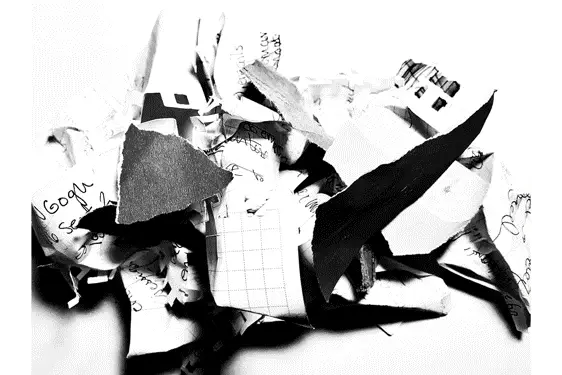
Picasso once said this - he said that all children are born artists. The problem is to remain an artist as we grow up. I believe this passionately, that we don’t grow into creativity, we grow out of it. Or rather, we get educated out if it. So why is this?
Sir Ken Robinson "Do schools kill creativity?" Ted Talks Daily
From my own experience, freedom of thought in any creative ambition whether it is in architecture, writing, art, design, leads to fulfilling outcomes. On the other hand, there are times when creativity can get stifled by outside stressors, criteria, expectations, criticism, rationale. It’s a challenge to pull away from this mindset, particularly in a professional setting, and return to the creative, personal expression we had when we were children. When I think about Ken Robinson’s question, I imagine that we are educated into practicality, efficiency, standardization, familiarity when we step into the office. With these certainties in place, we stop drawing. We fear the feeling of criticism. We become timid. Our departure from drawing and sketching over time leads to a form of muscle atrophy by the time we become adults. If we can reserve time for this critical exploration and deep thinking, perhaps we can bring our work one inch closer to original, thought-provoking, and rewarding design ideas.
So, can we just start by drawing again?
These ideas inspired a ten-week drawing series in our office during which most people were working from home full-time. We dove into thematic drawing topics which increased in complexity over time and aimed to embolden each person. Each person in our office had a duration of thirty minutes to loosen their thinking and allow their mind to unravel. The drawing series was designed to develop a cross-training between our everyday work tasks and this dedicated “create, draw, and explore” time within our work week.
WEEK 1: LINE
Tools: Black pen on sketch paper.
Prompt: The first week began by drawing contour lines that were carefully spaced to create a sense of mass and volume of a lemon. The exercise advanced into a drawing of a hand using this same method. The challenge was to draw a line knowing what the next line was going to be.

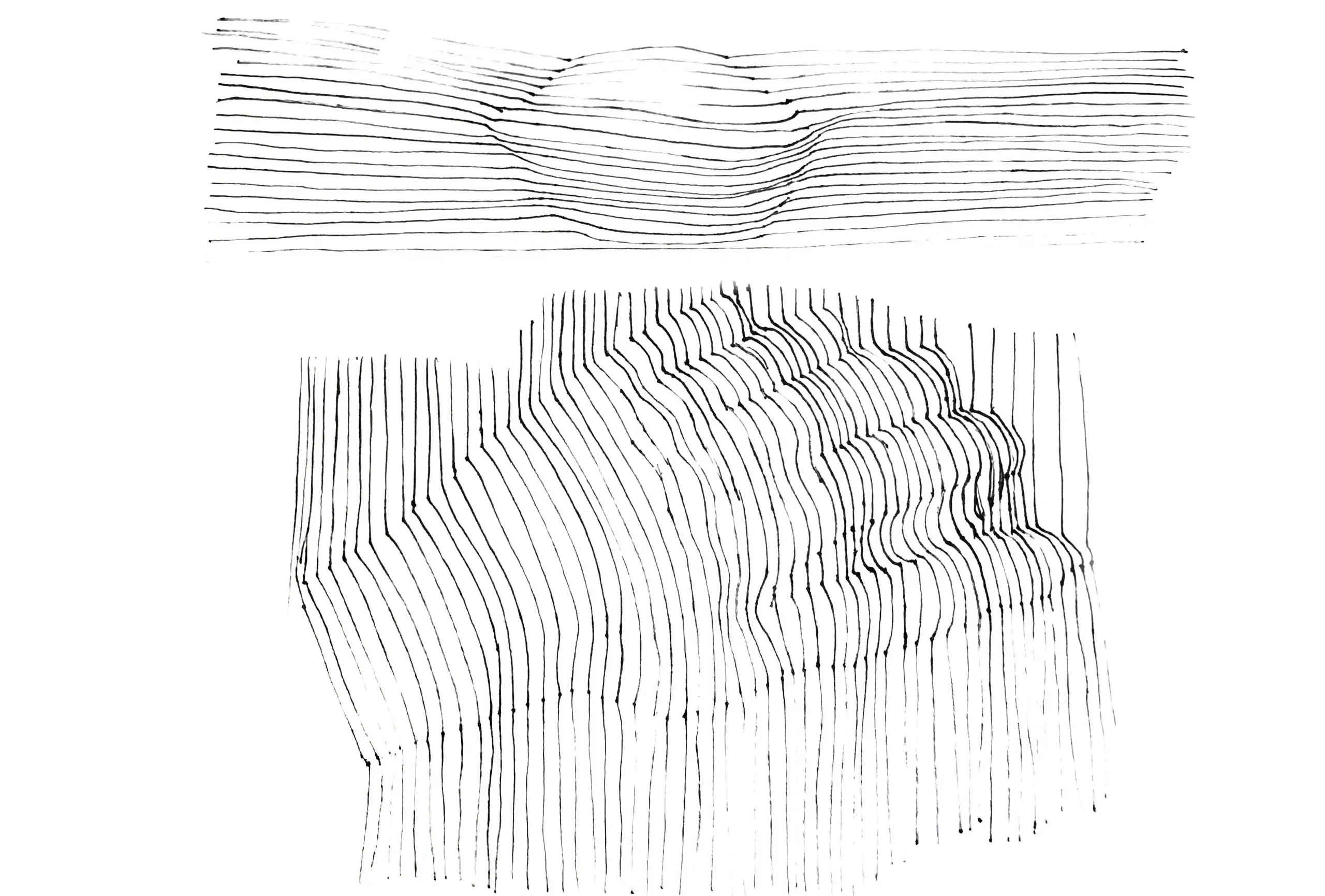
WEEK 2: COLOR
Tools: Watercolor, colored pencil, and marker on mixed media paper.
Prompt: We looked at intensely colorful photographs of built and landscape forms. We discovered unexpected color collisions through the drawing media.
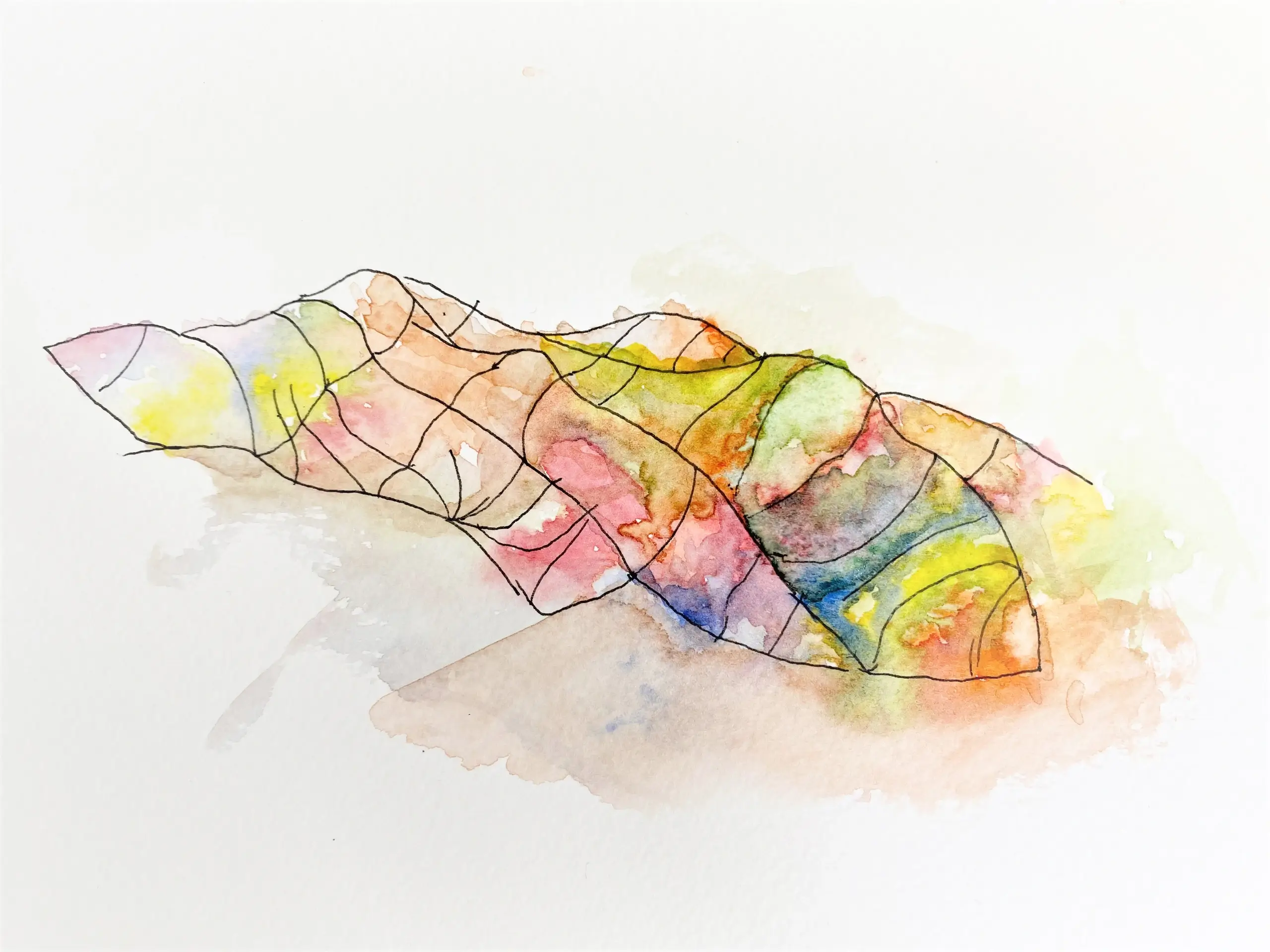

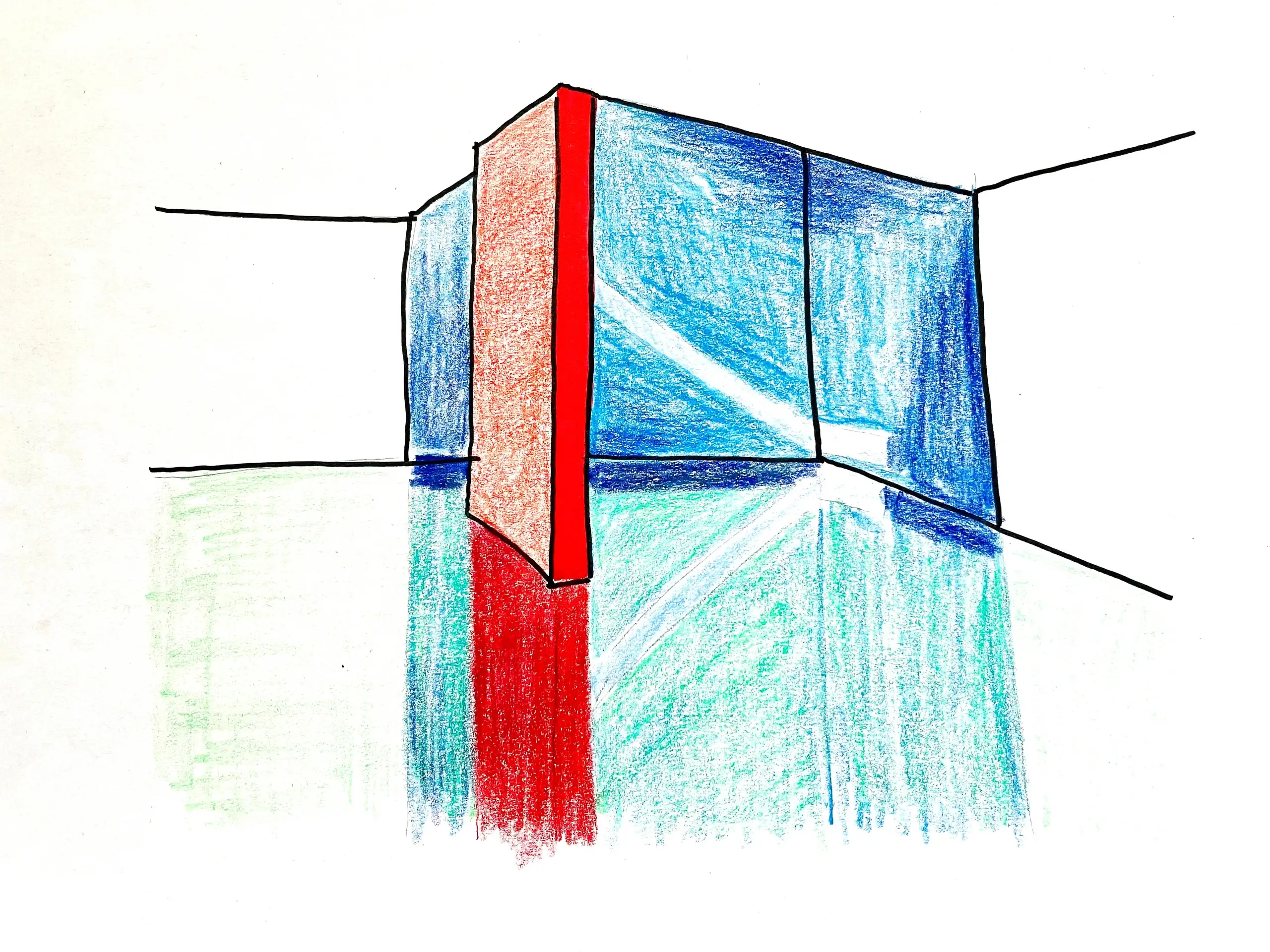
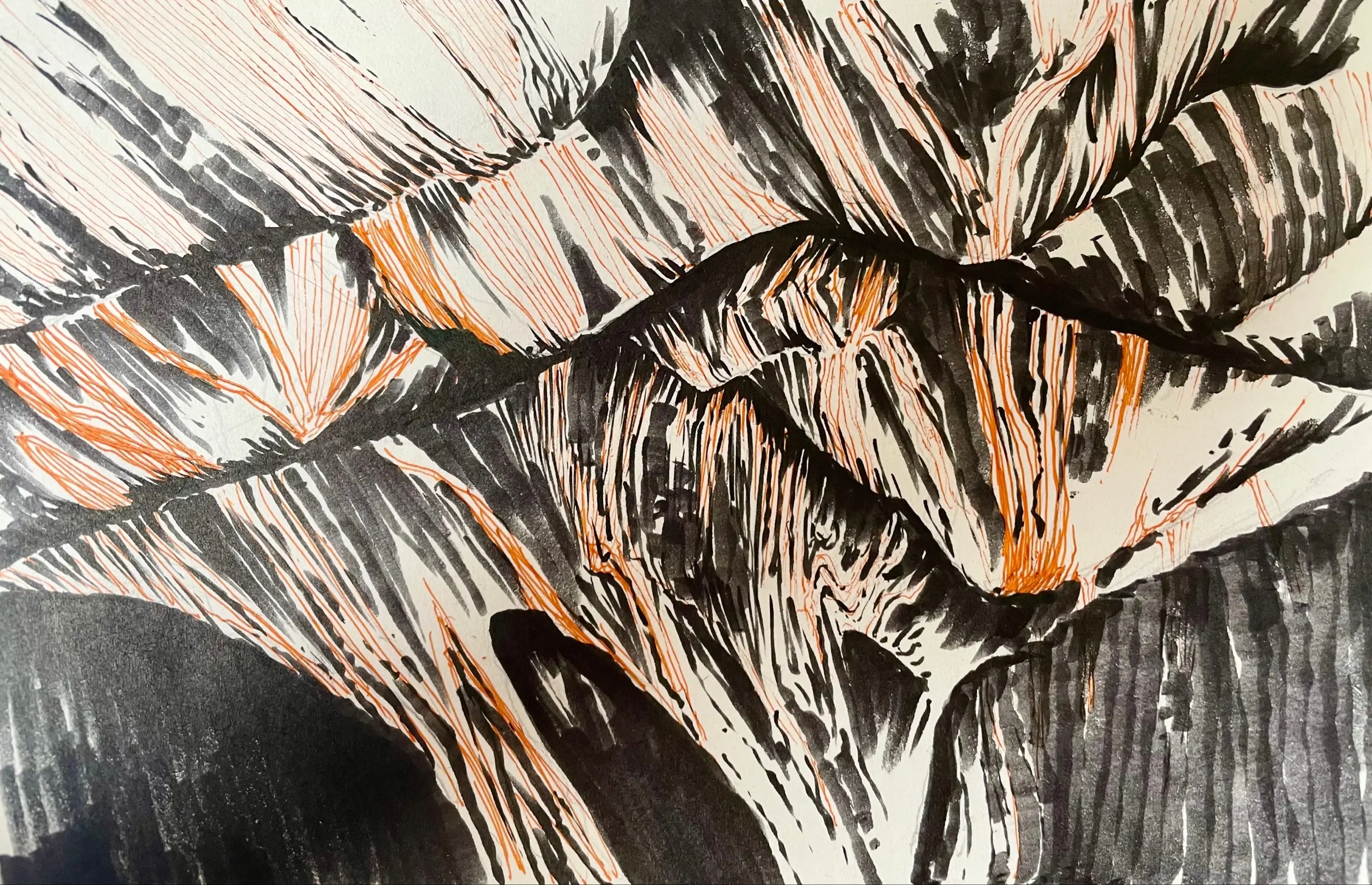
WEEK 3: FORM
Tools: Black pen on sketch paper
Prompt: We started the exercise with a routine drawing we see often as designers- a plan, section, or elevation. The drawing was of a familiar place and we continuously altered it through a series of actions – rotate, push or pull, dislocate, tilt, reflect. The familiar turned into something foreign.

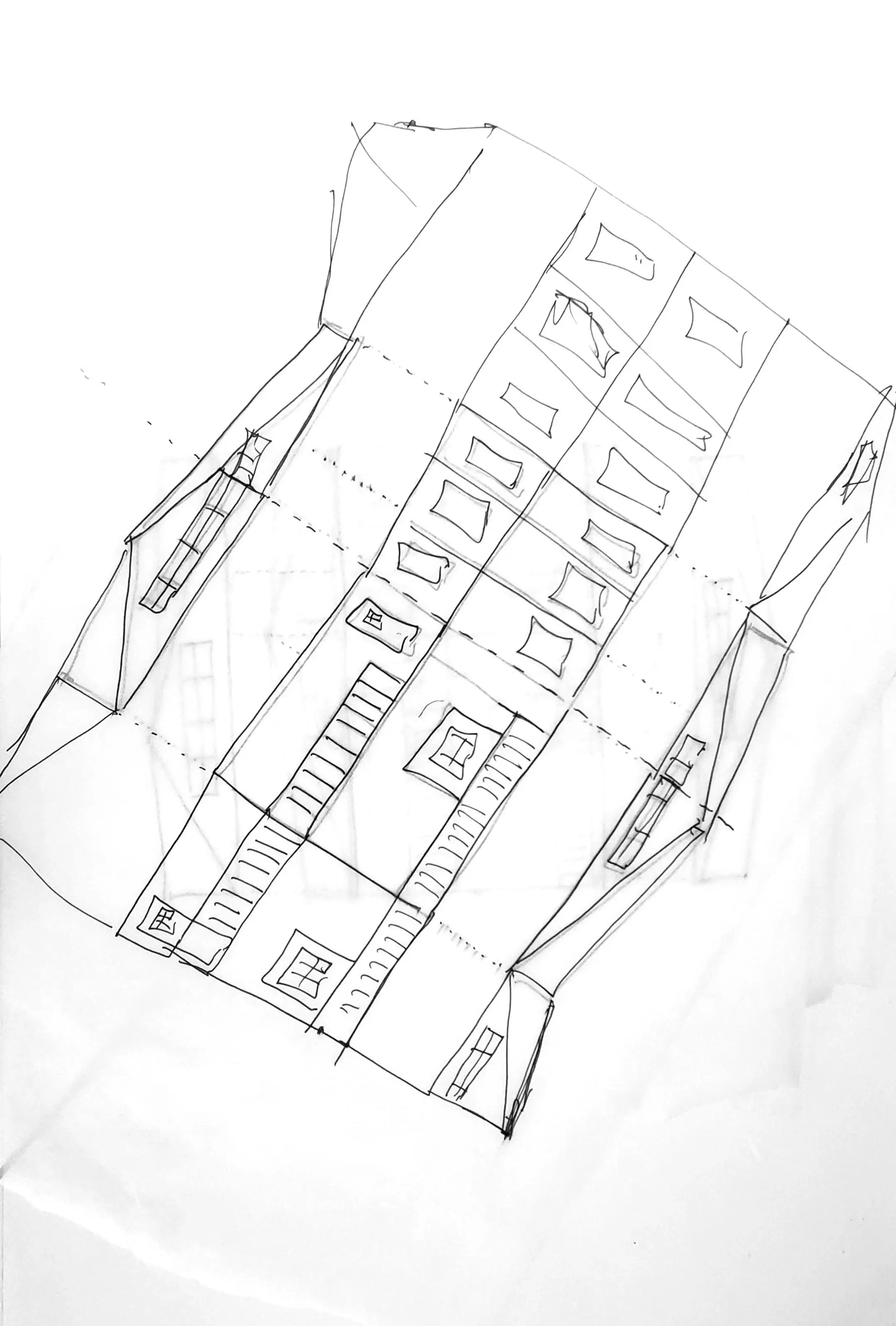

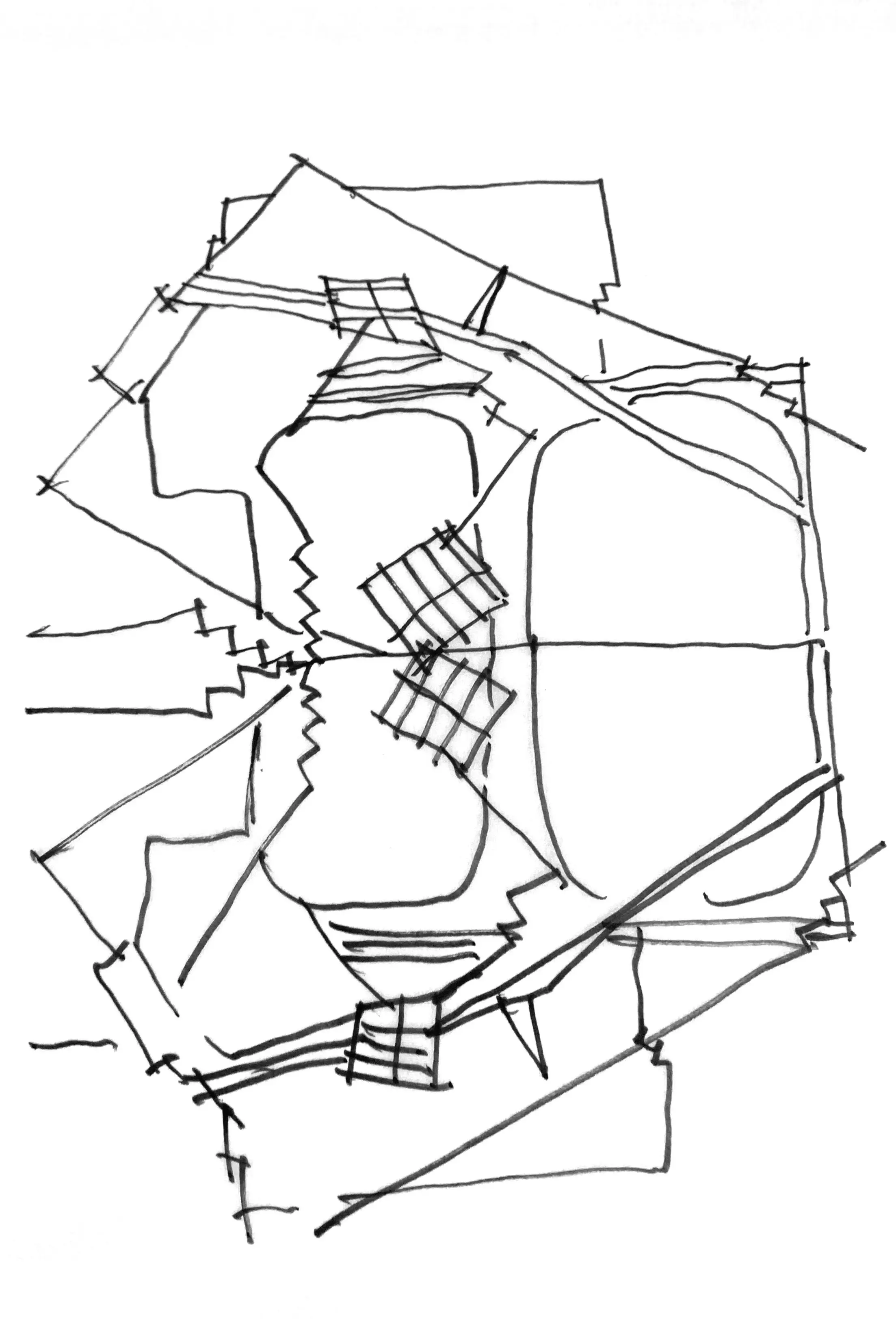
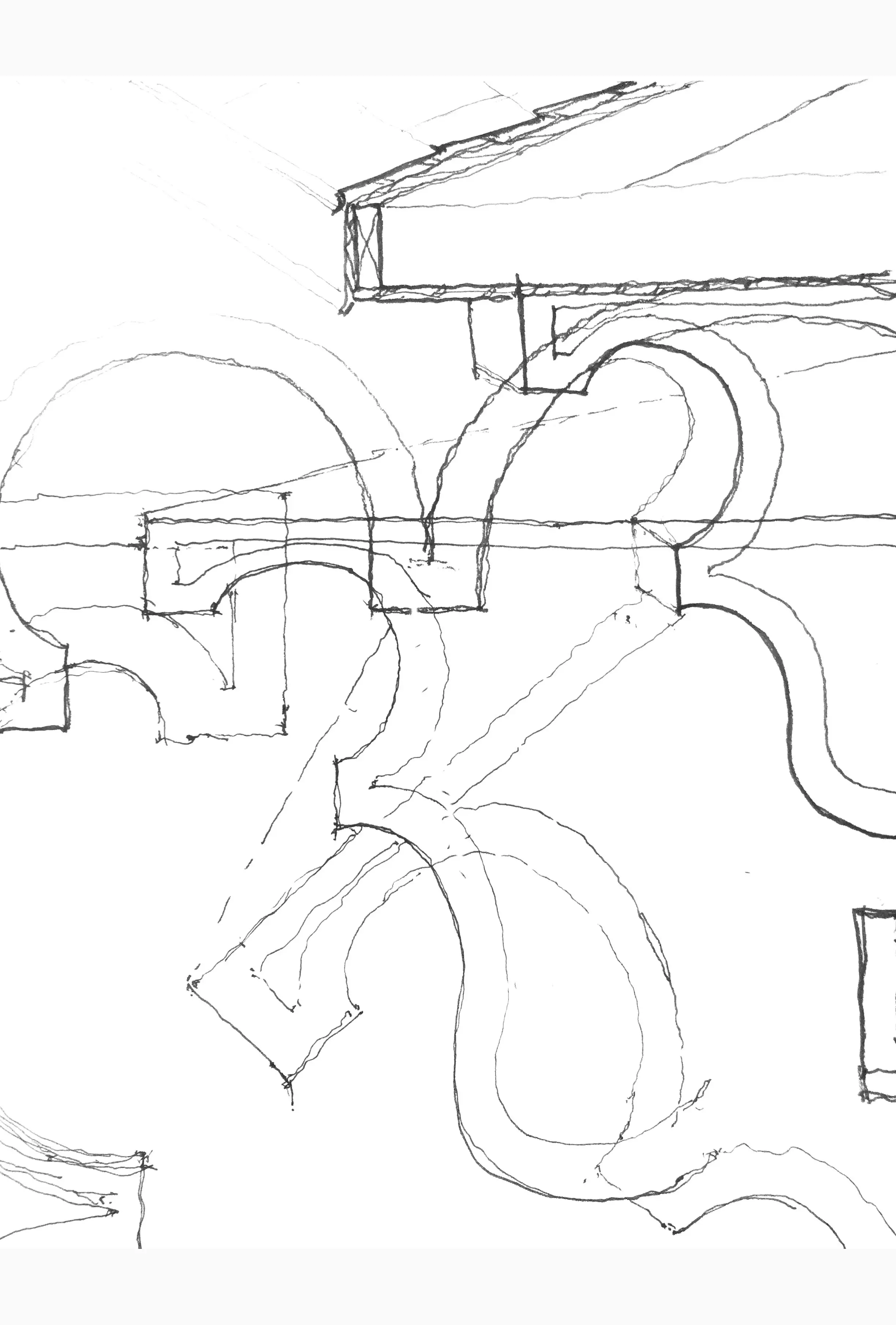
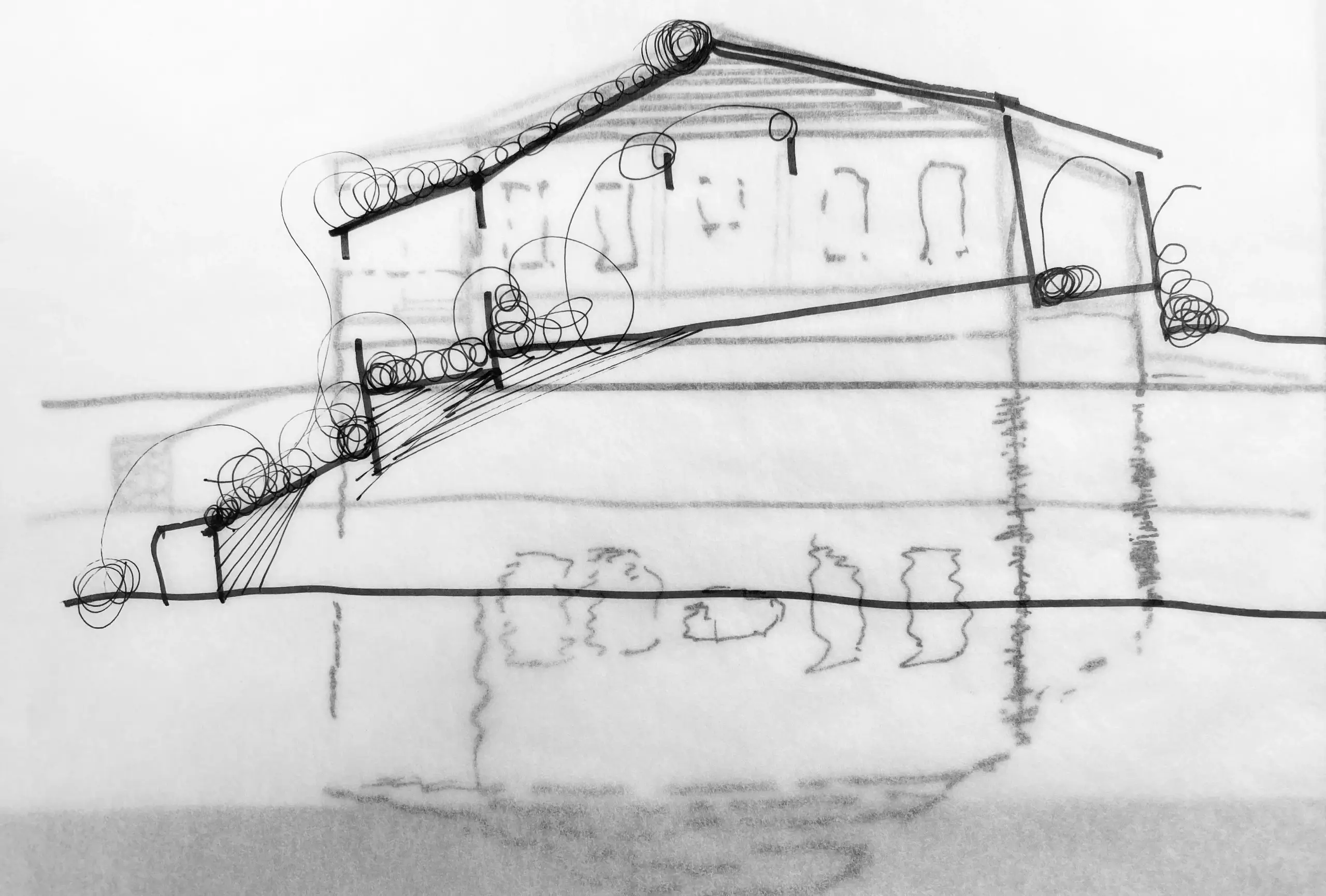
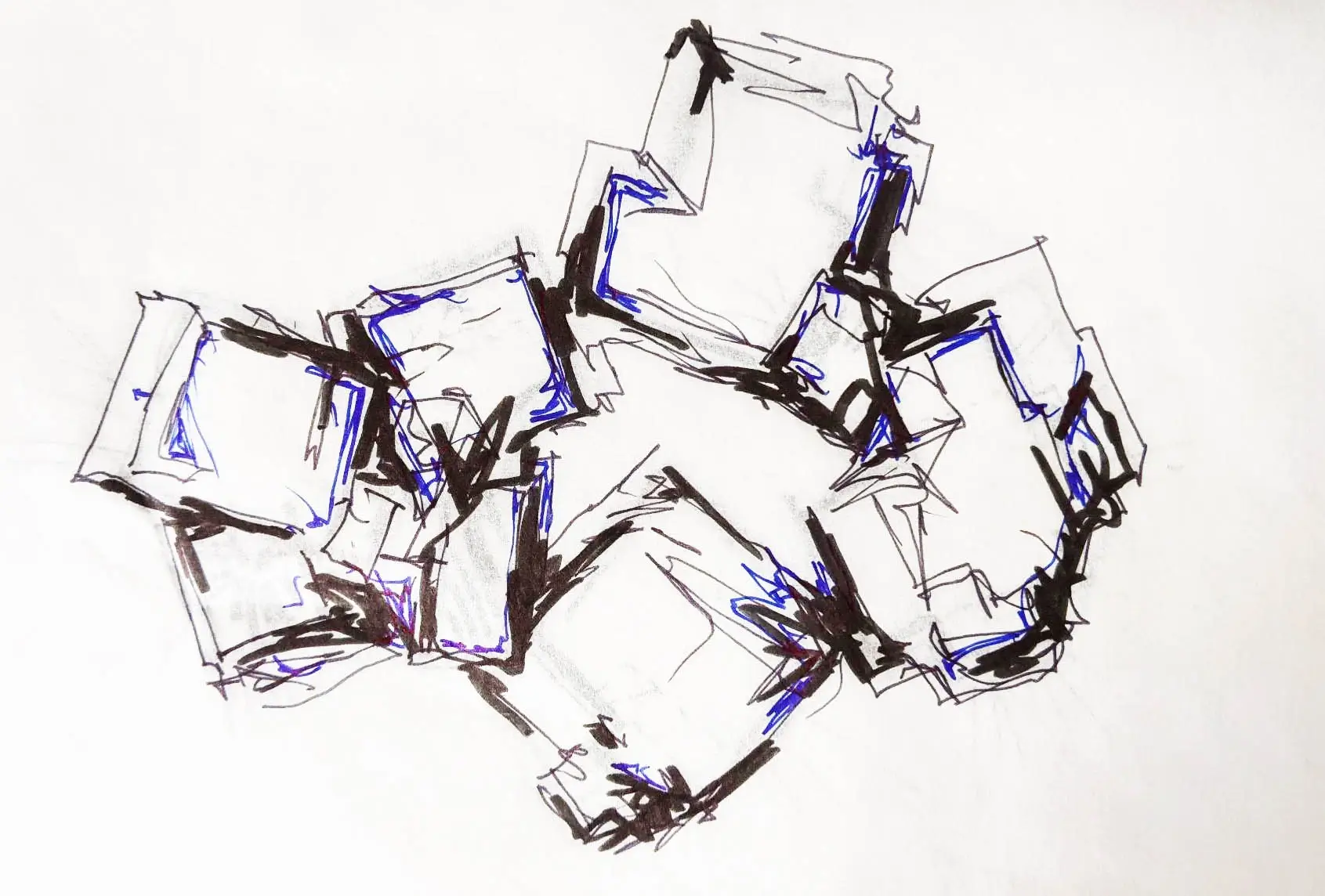
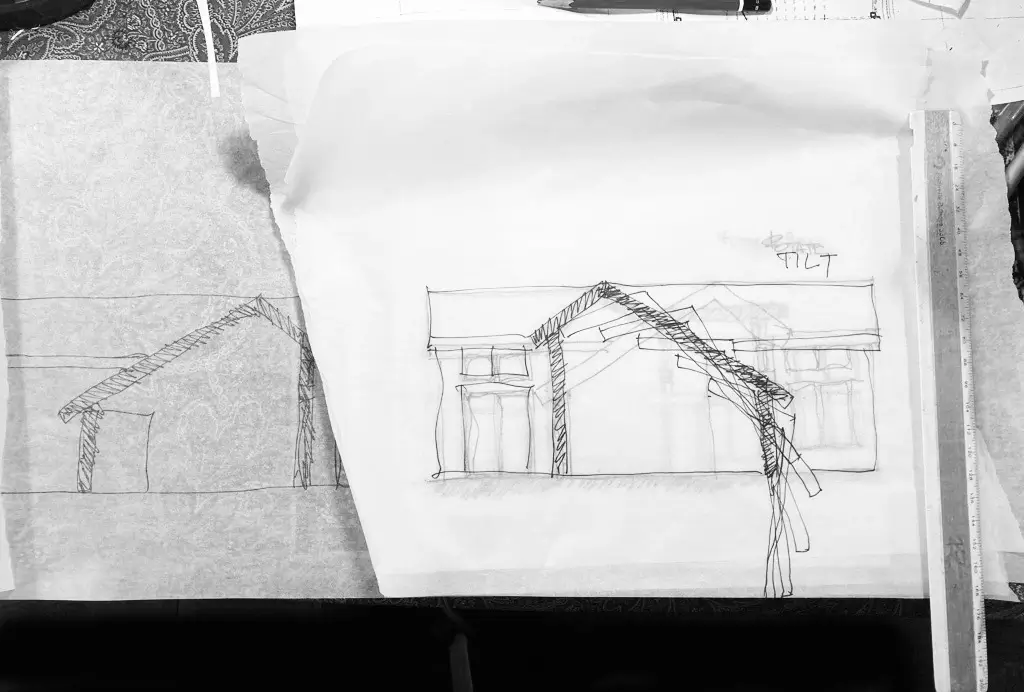
WEEK 4: VALUE
Tools: Blend of watercolor, pencil, pen on sketch paper.
Prompt: Individuals created still-life collections with objects in their homes and developed drawings and articulated depth through light and shadow.
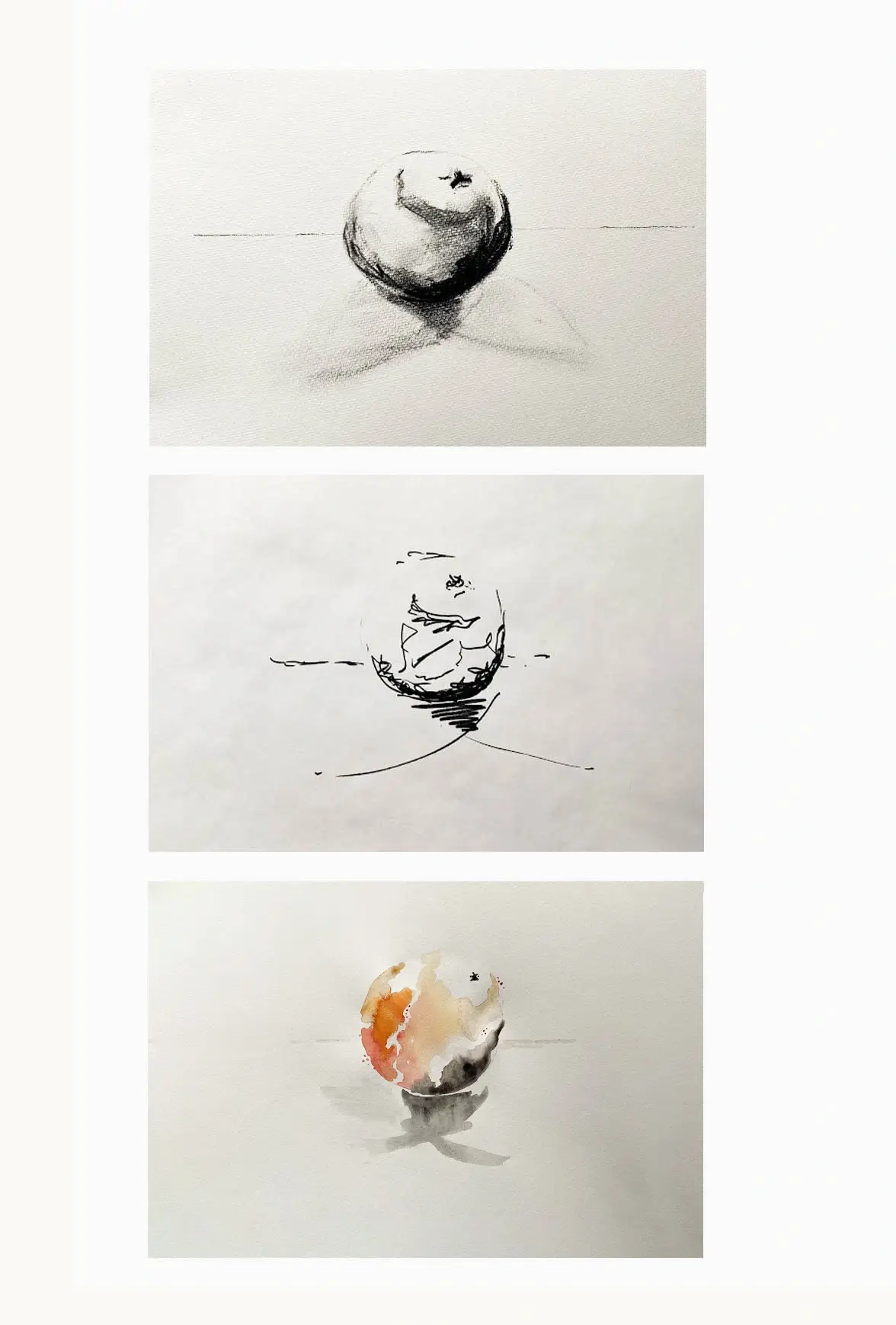
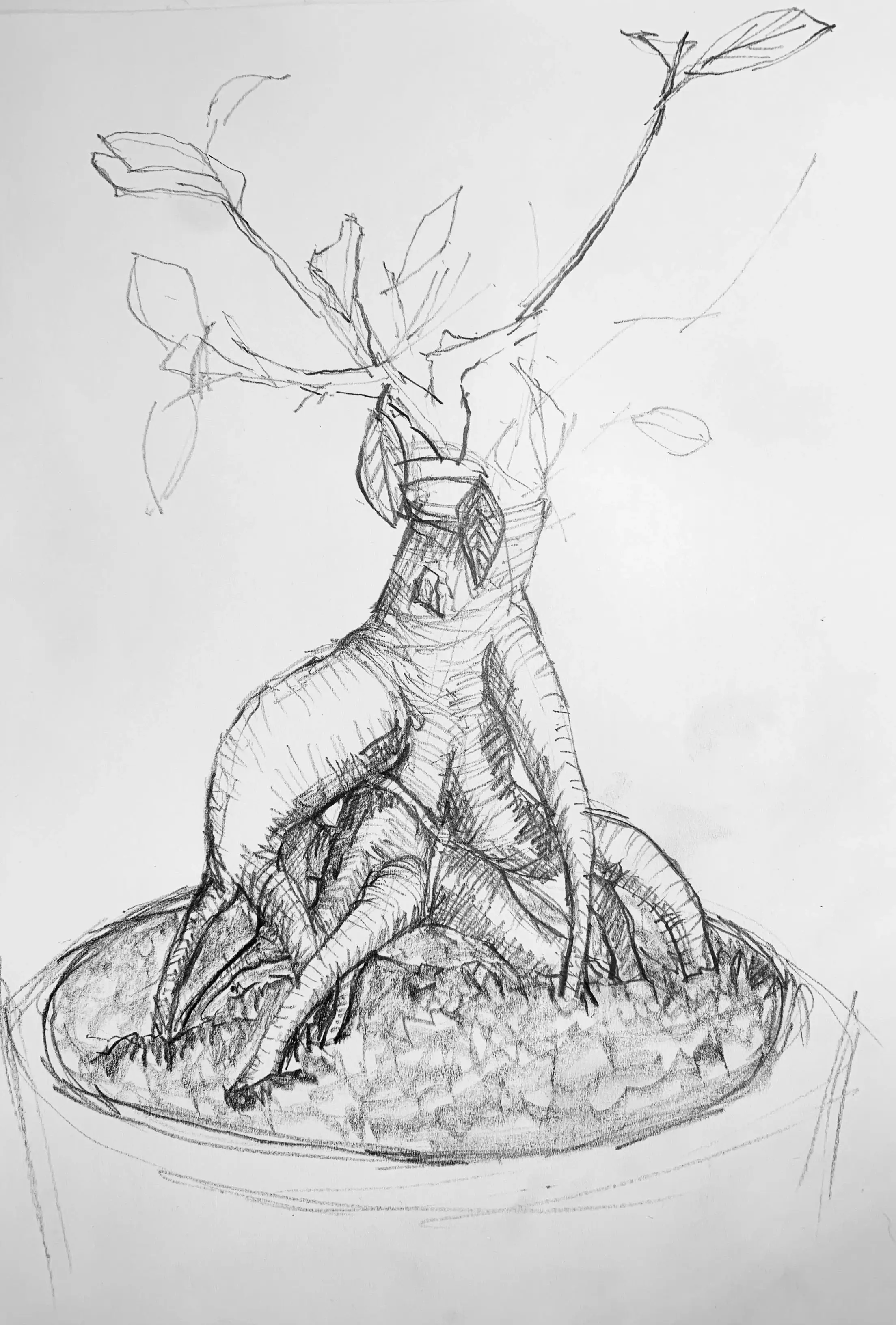
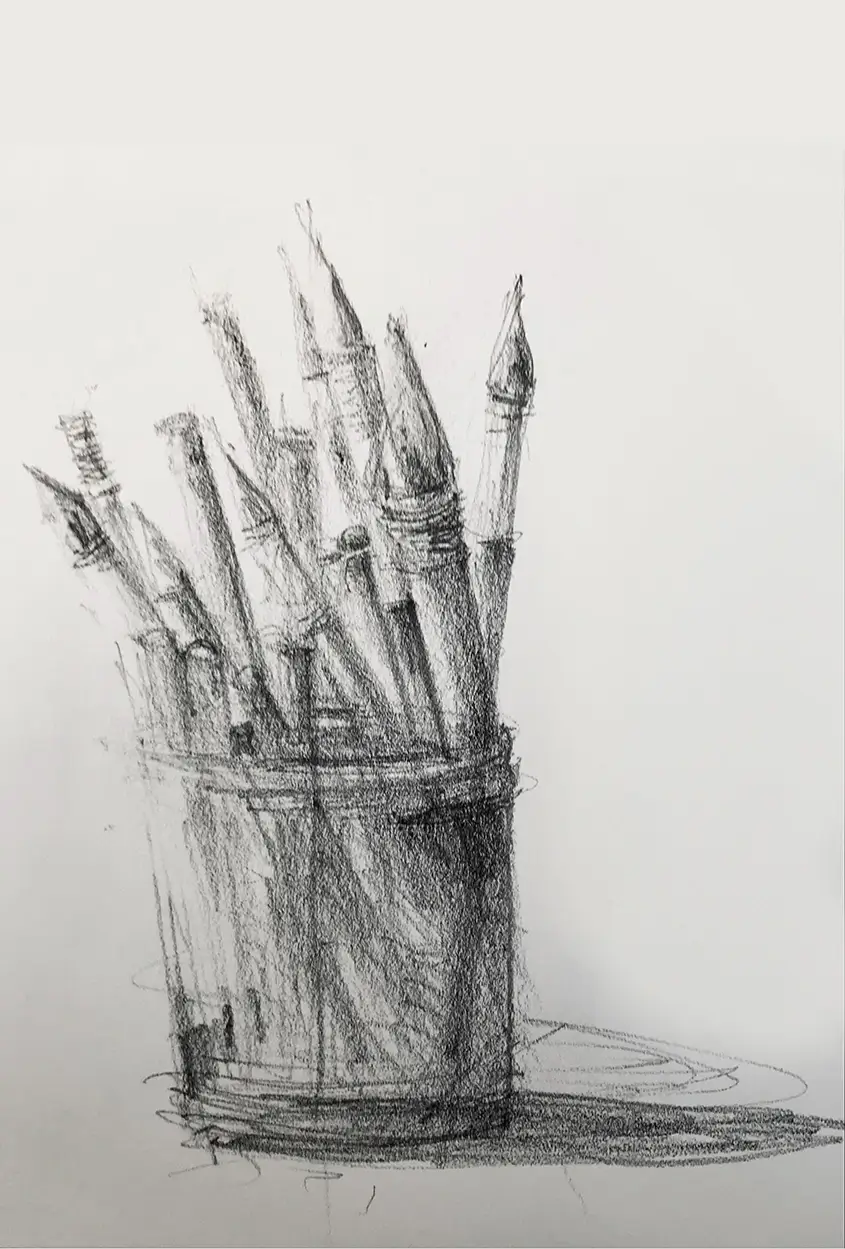
WEEK 5: FIGURE
Tools: Combination of pencil and pen on sketch paper.
Prompt: The drawing exercise was to describe movement and form through figure drawing. We looked at dancers, fashion designers, sports, cartoons, musicians as inspiration.


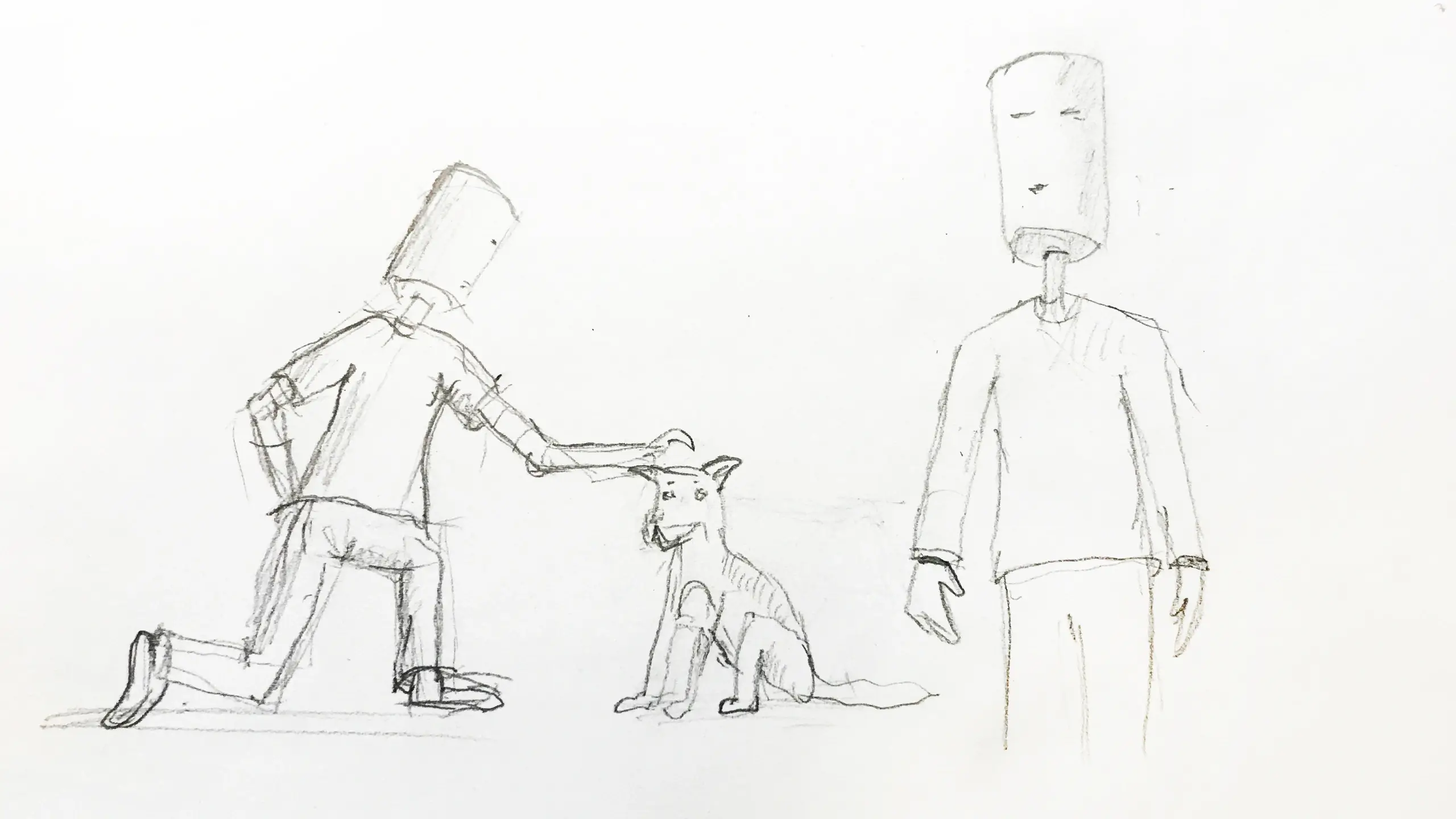
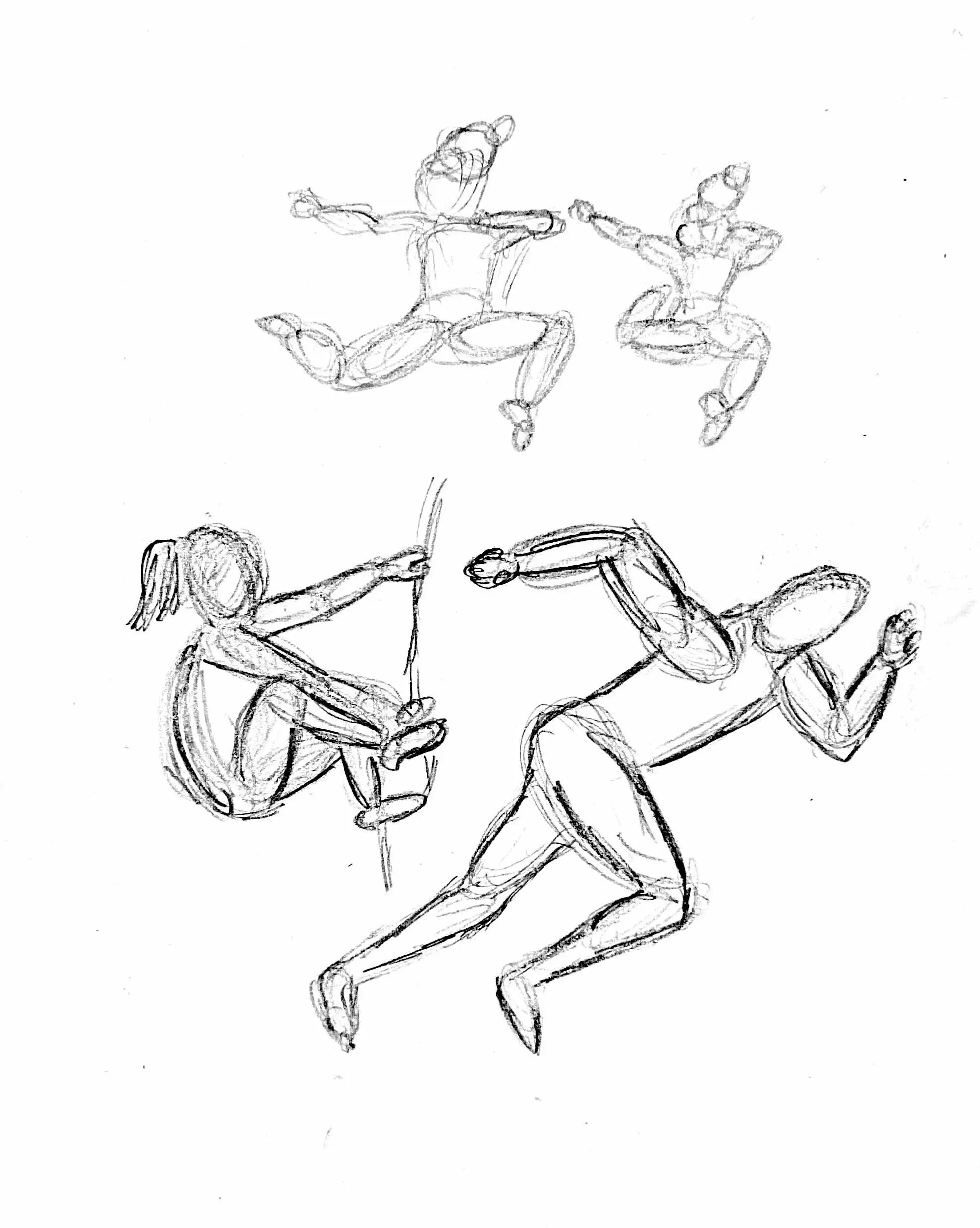

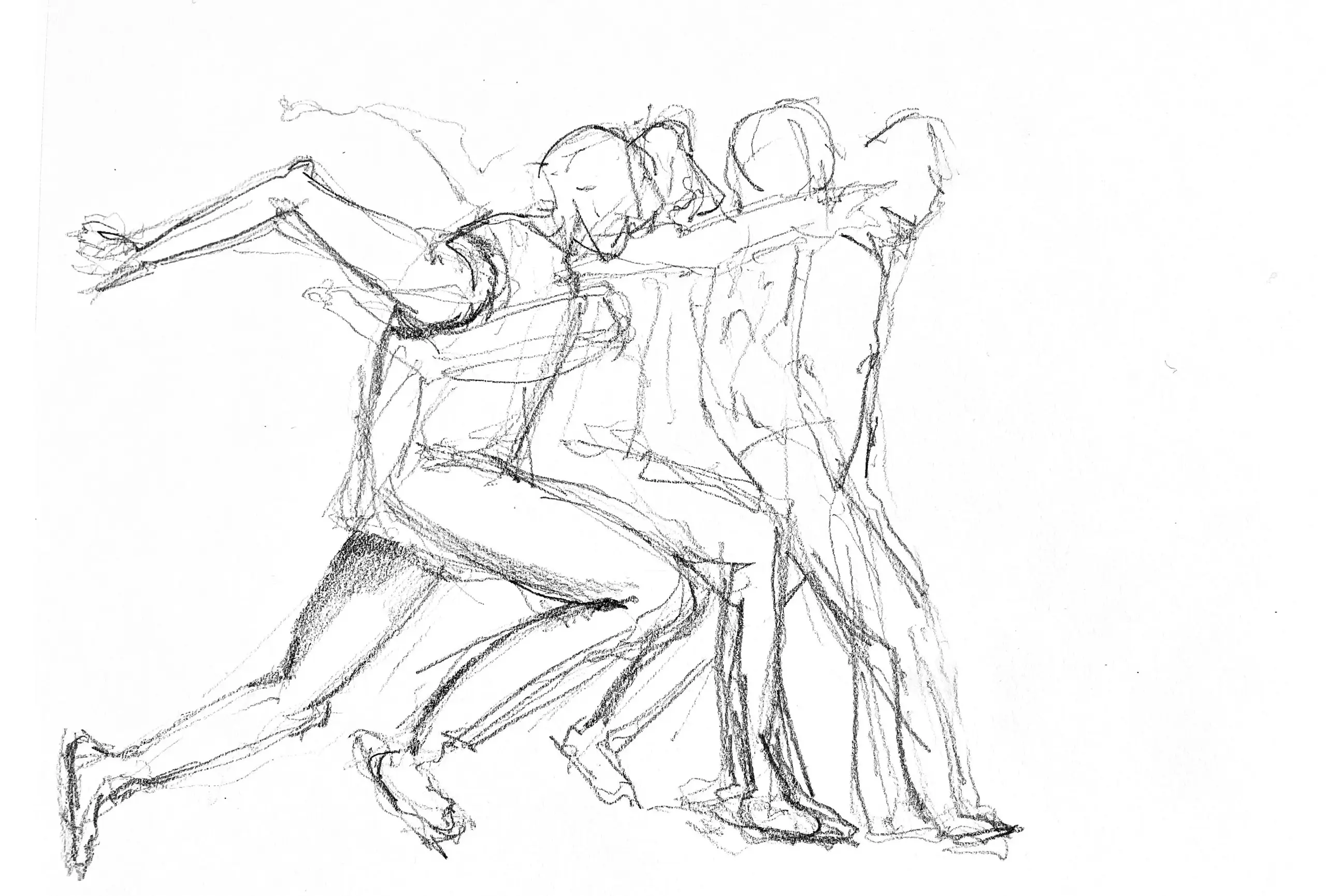
WEEK 6: PATTERN
Tools: Combination of pencil, pen, watercolor on sketch paper.
Prompt: We investigated the richness in ancient architectural spaces through patterns and rhythms. We studied their structural arrangements at various scales by zooming into the façade patterns of the Hawa Mahal, the interlacing colonnades of the Mosque at Cordoba, the three-dimensional views of the stepwell Nagar Kund in Rajasthan.
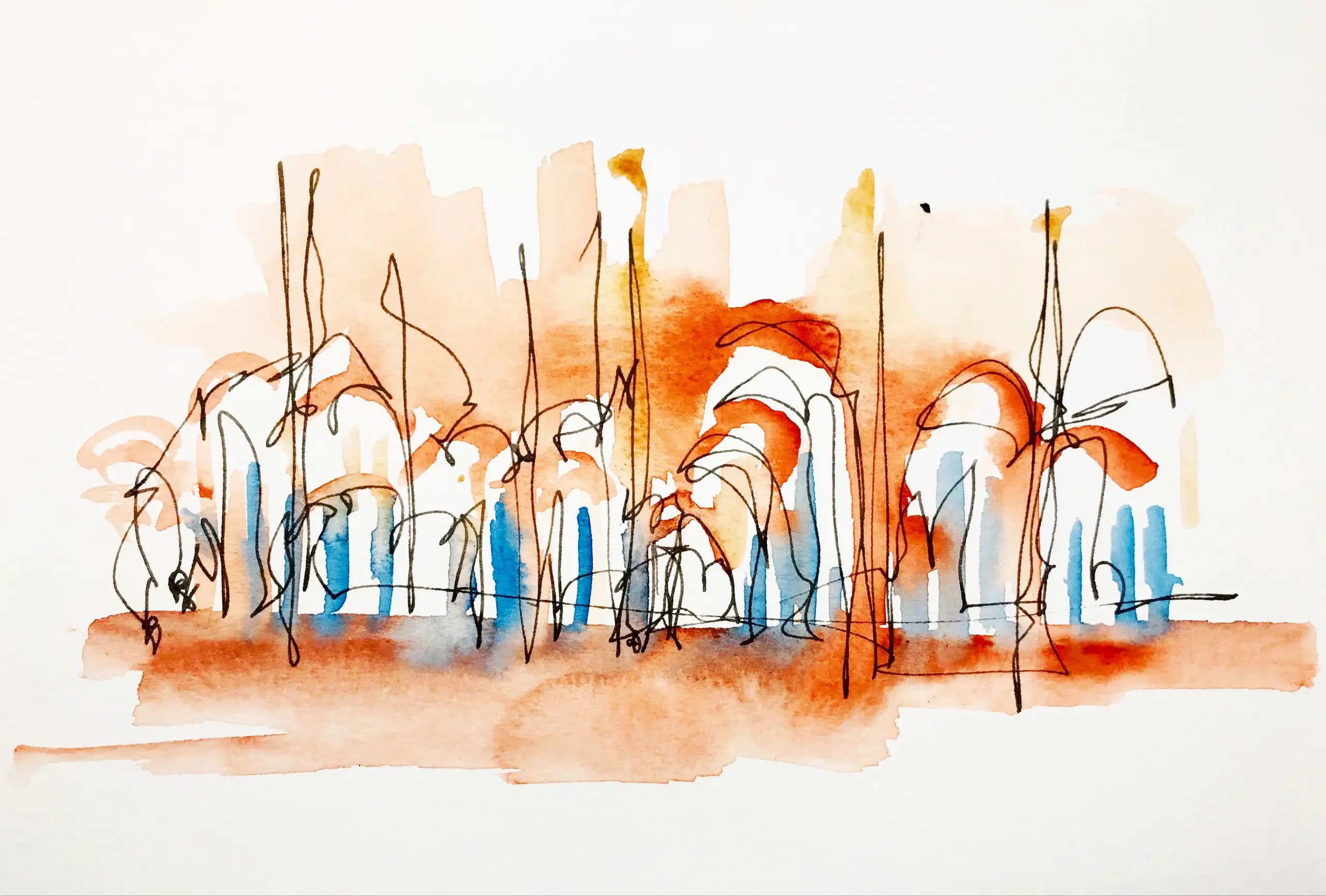


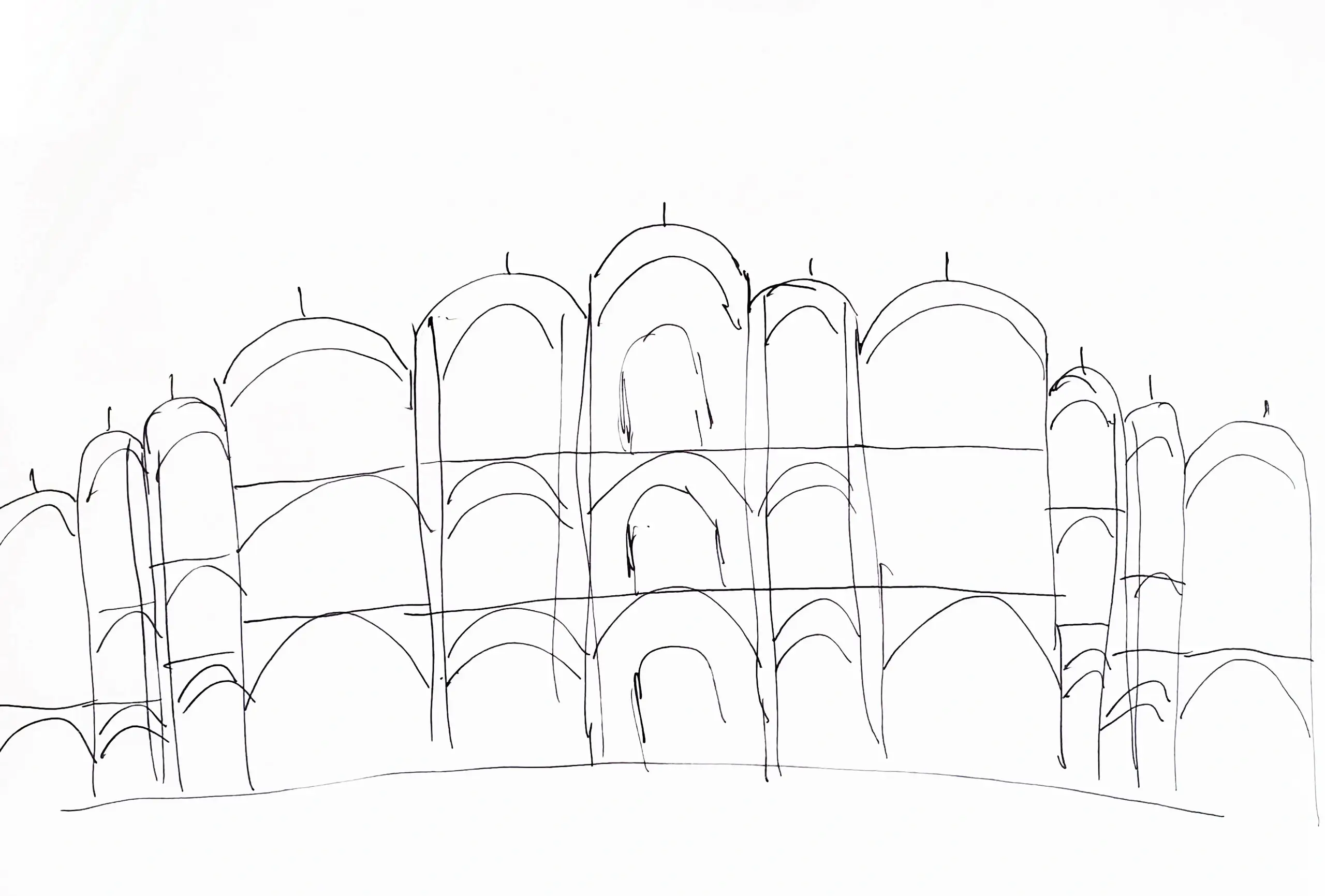
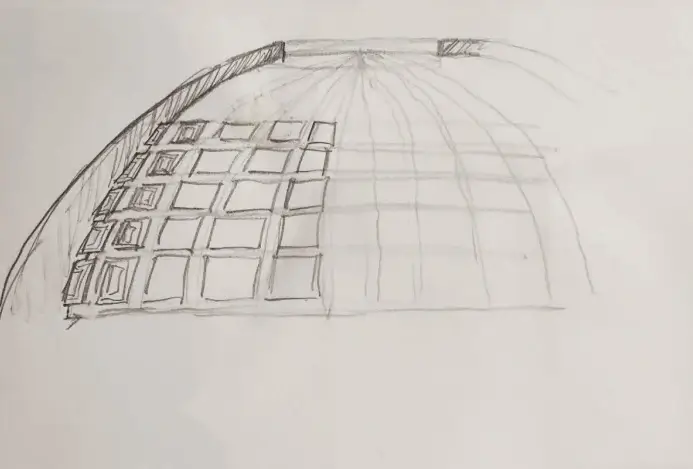
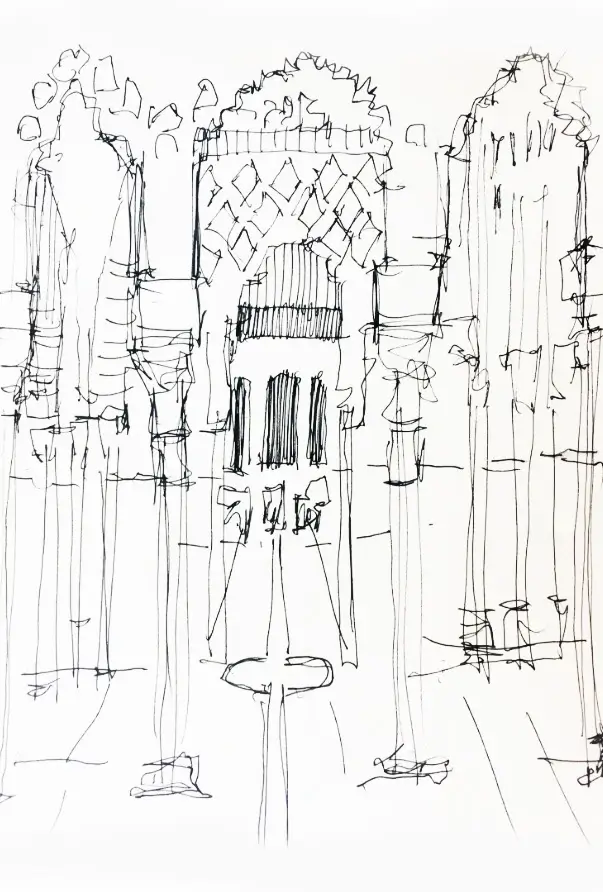
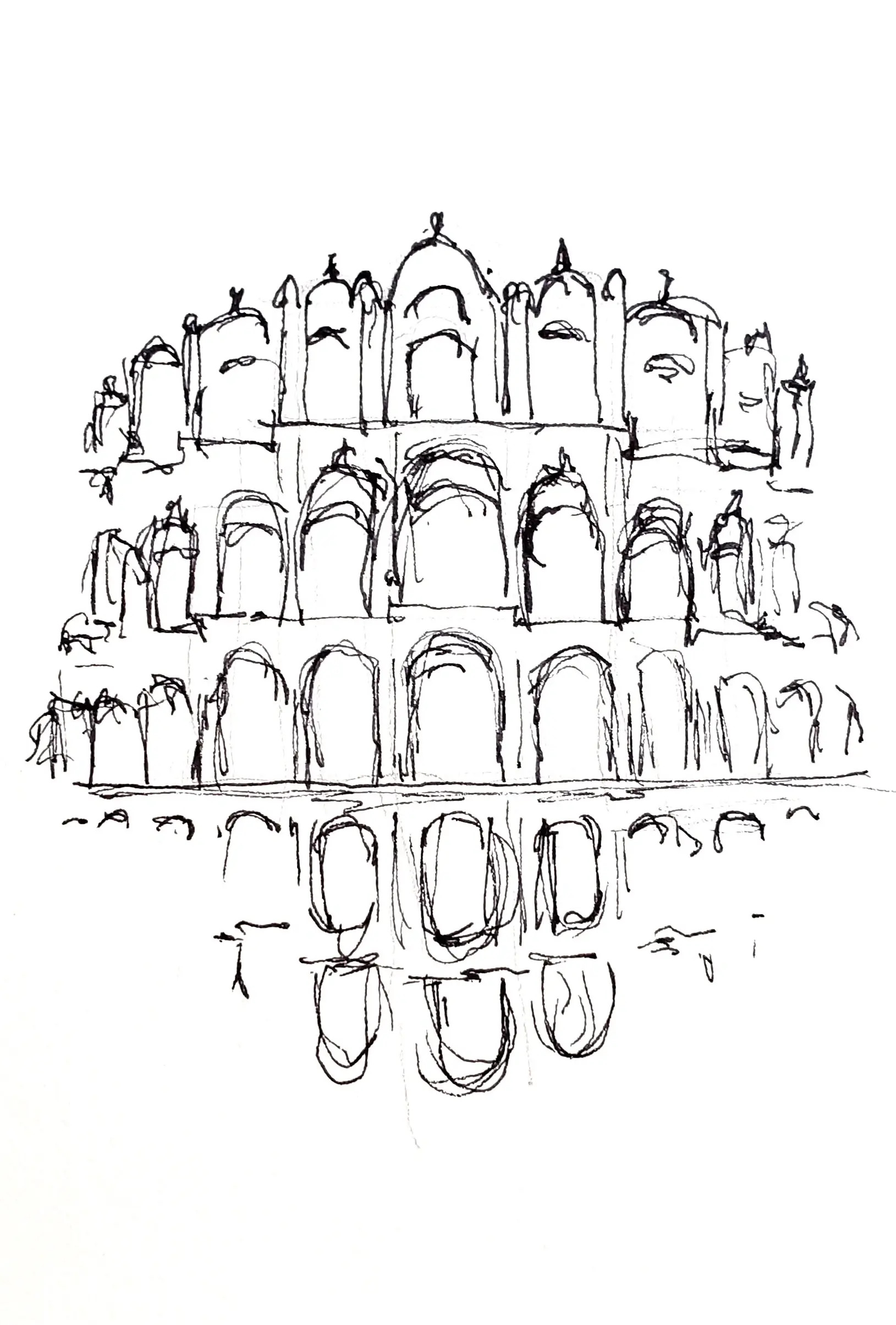
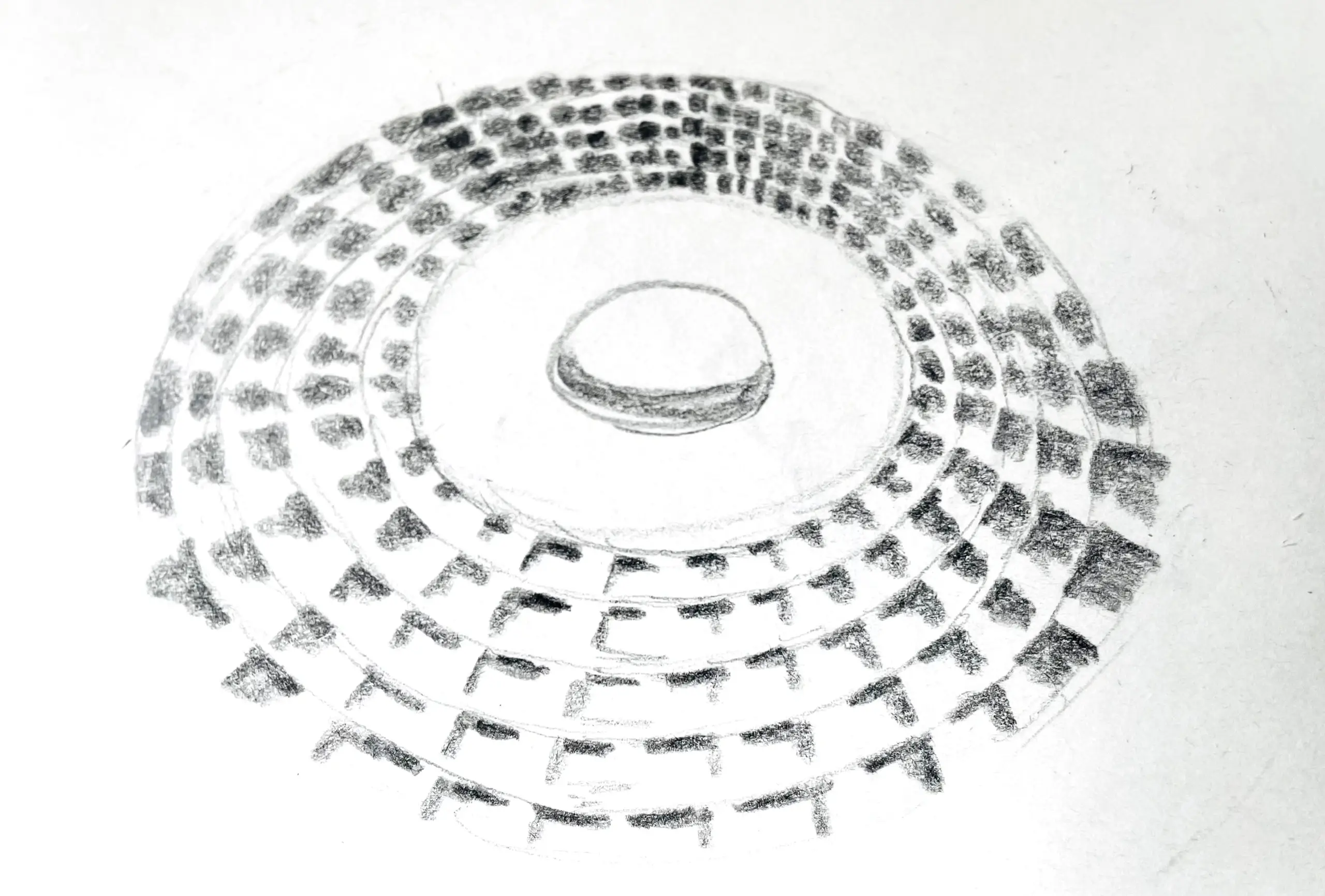
WEEK 7: COLLAGE
Tools: Photography, digital pen, found objects.
Prompt: The collage week demanded bold and free idea generation through building typologies and site combinations (gallery in a field, library in a mountain, observatory in the woods, chapel in the arctic). The compositions were made from manipulated found images and sketches.
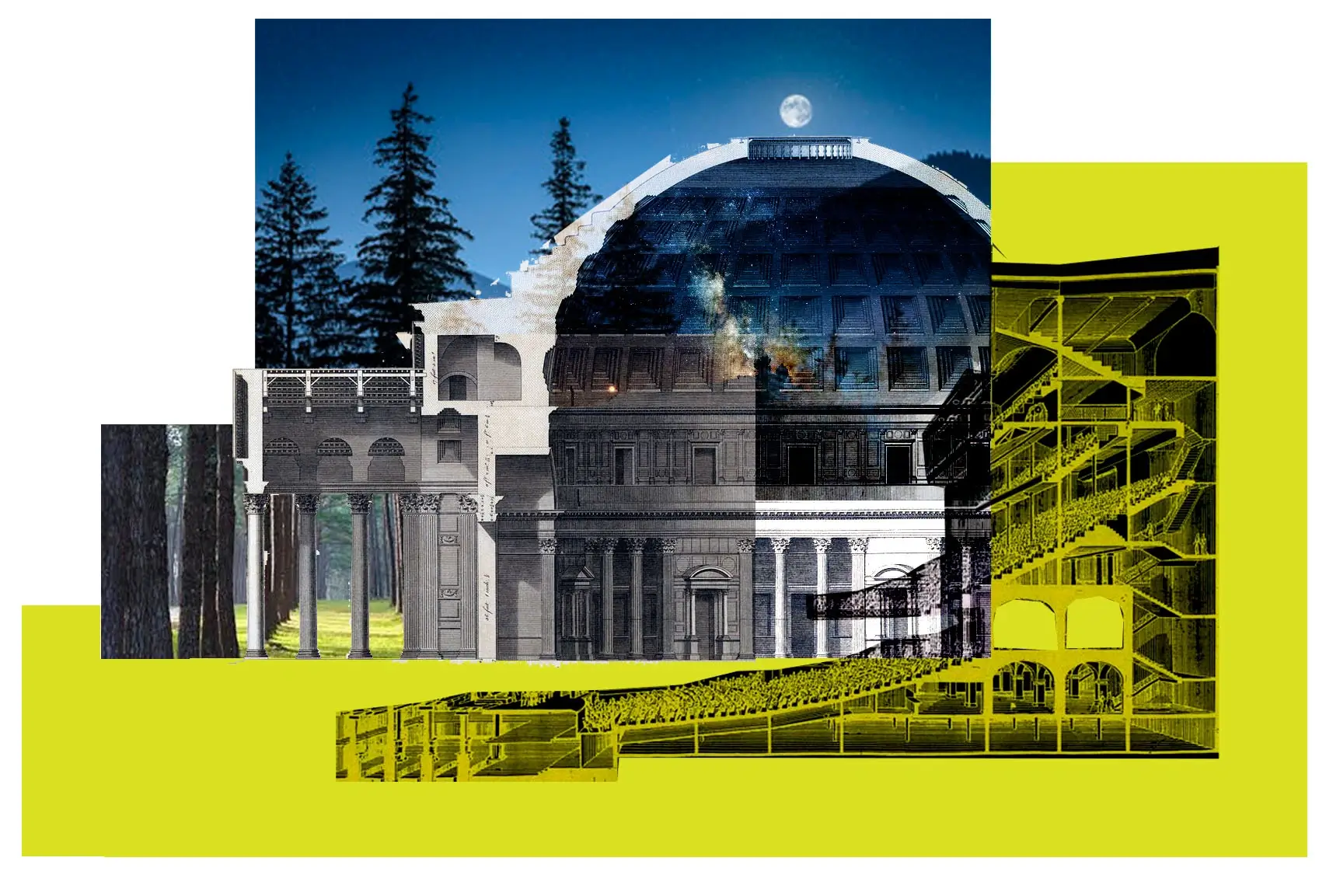

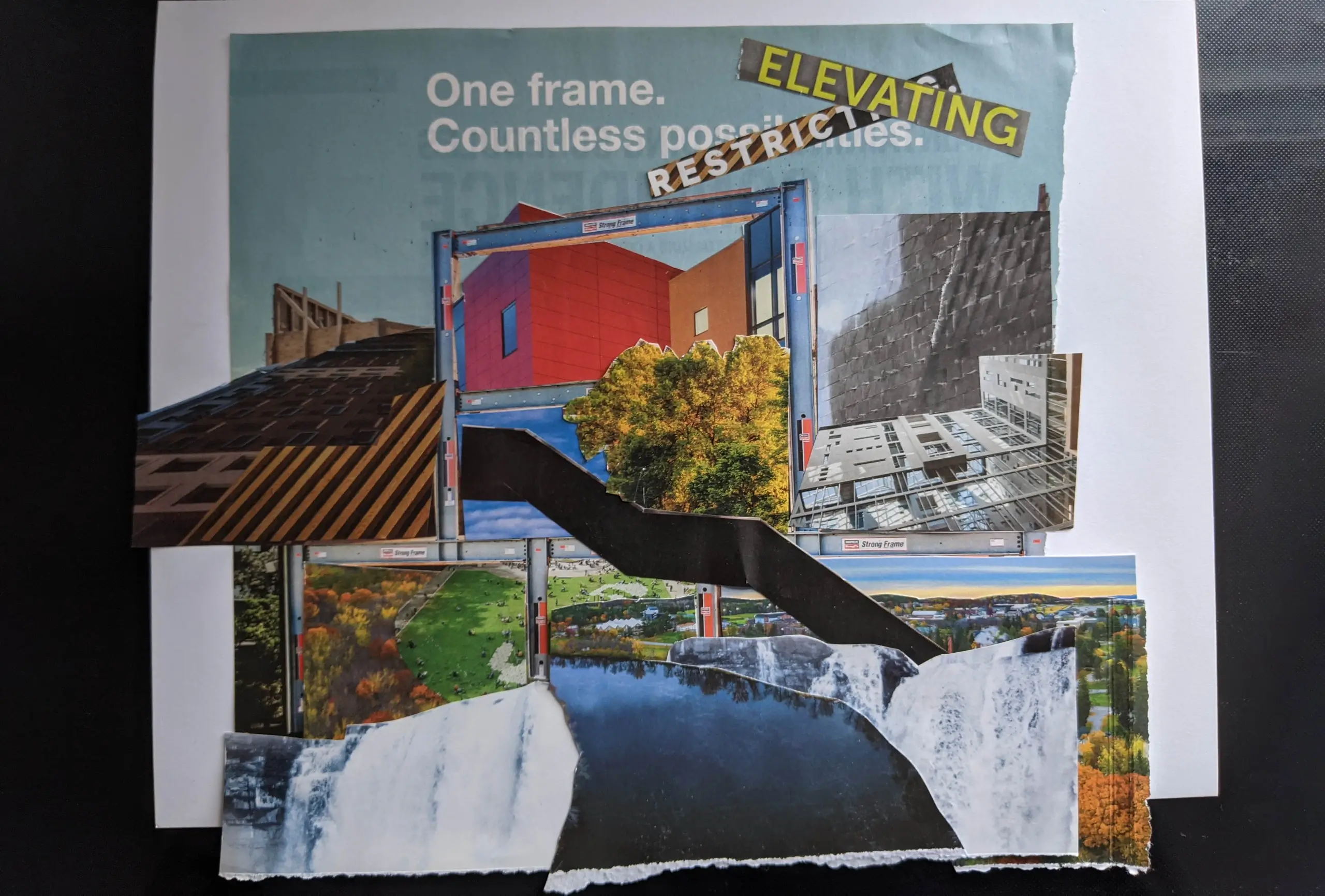
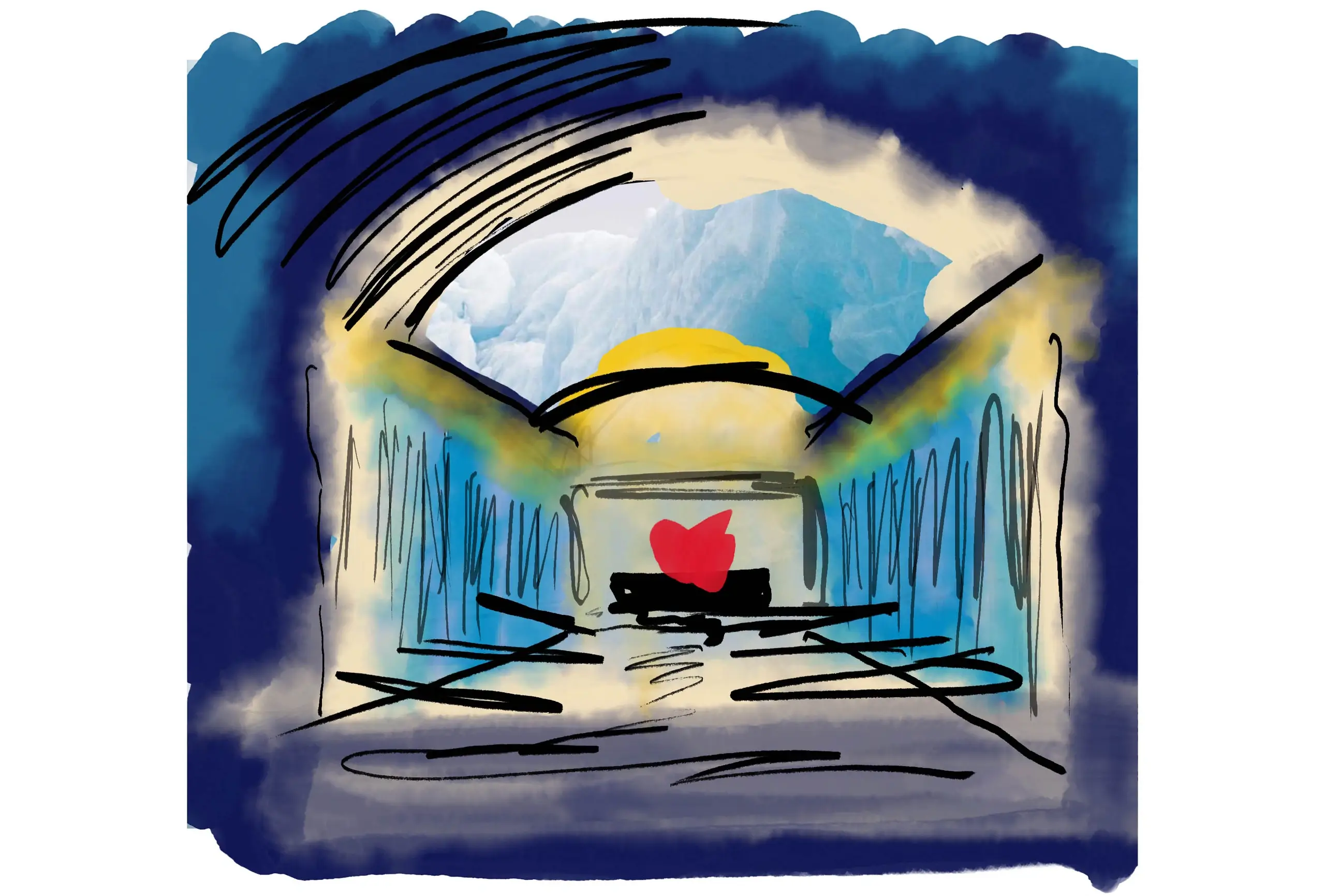

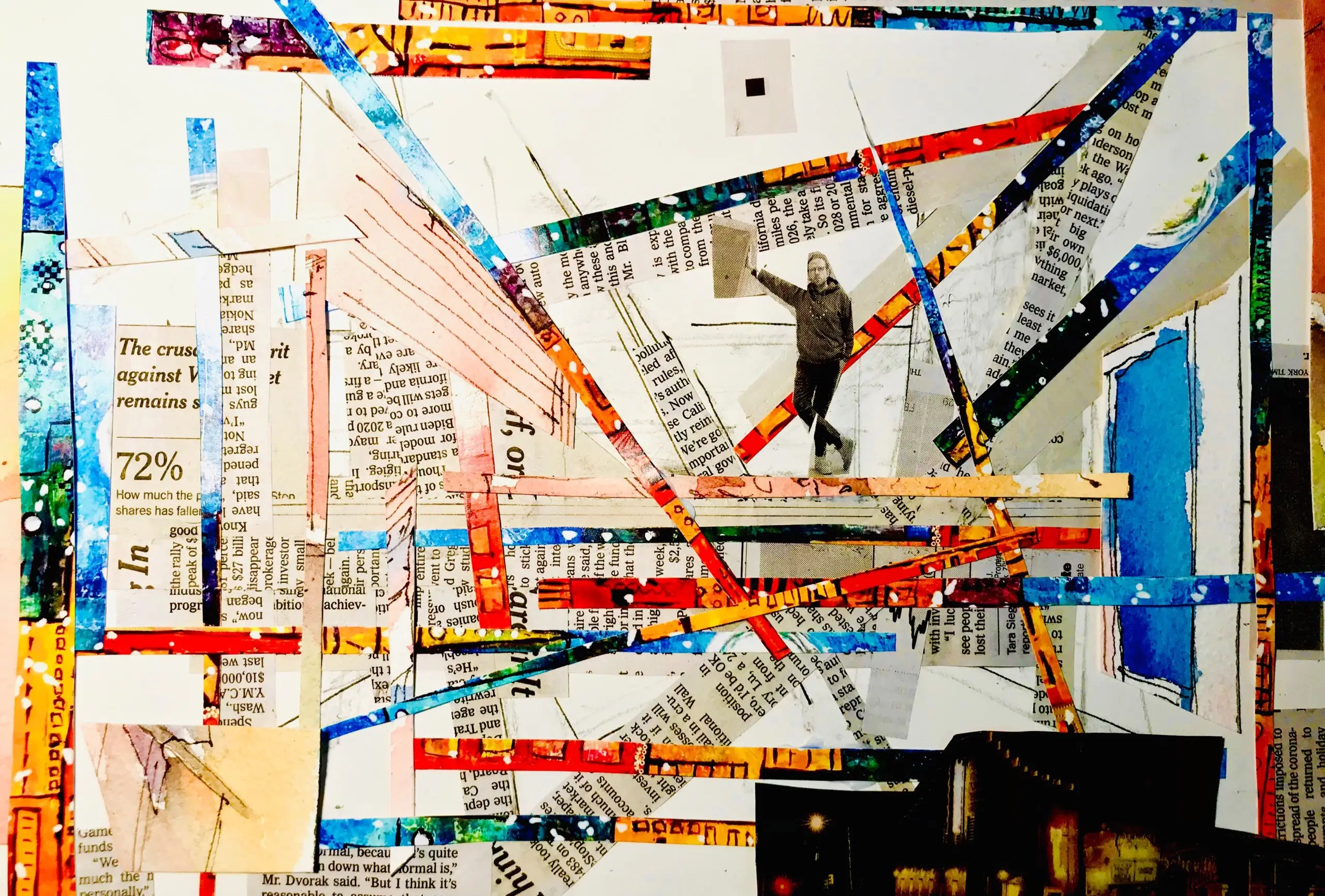
WEEK 8: TEXTURE
Tools: Graphite, pasta, folded paper, children’s toys, pins, clay, rope, glue, clothing hangers.
Prompt: During week 8, many people created and composed tactile surfaces using everyday found objects. Their black and white photographs intimately showed the variety of textures we are surrounded by.
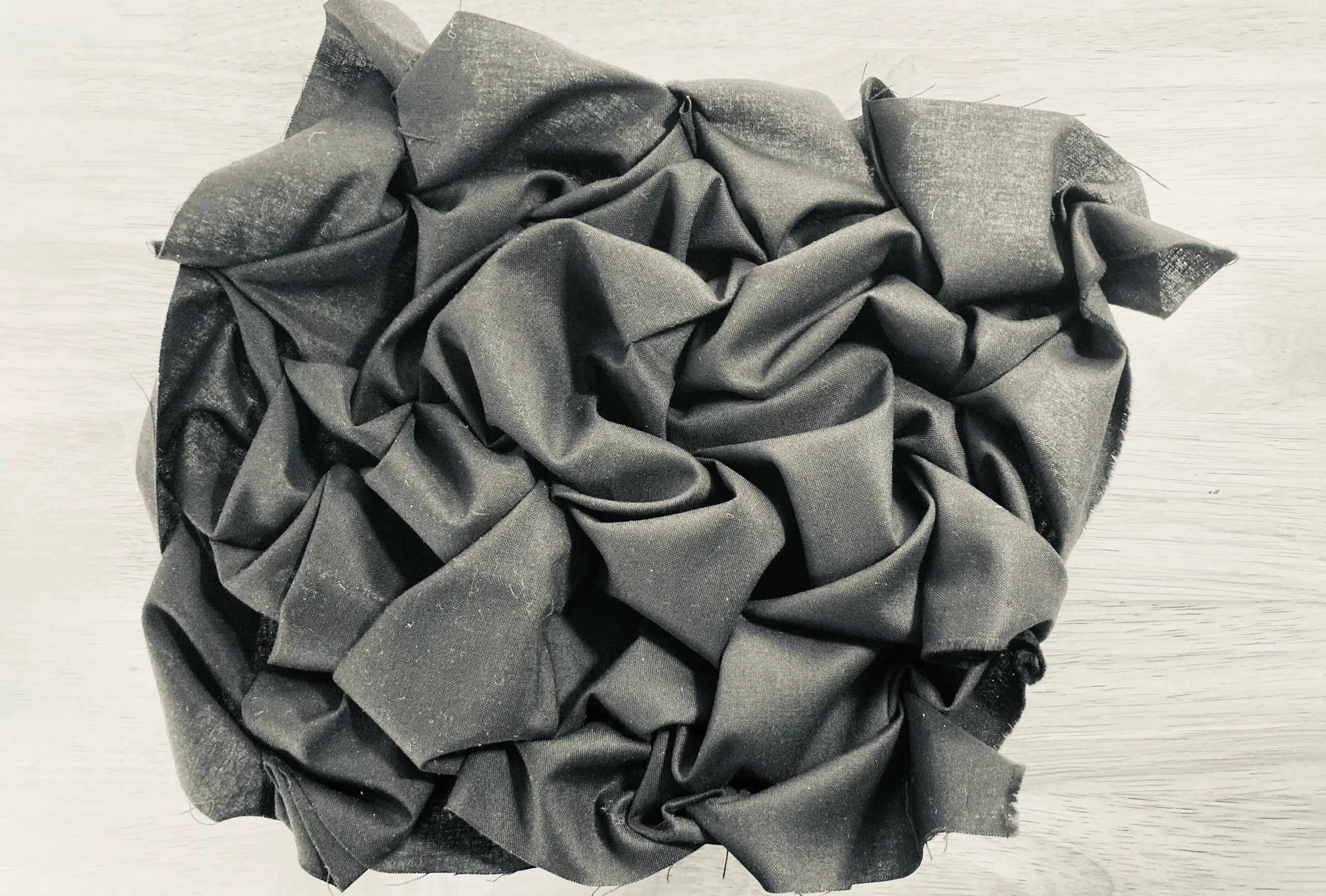


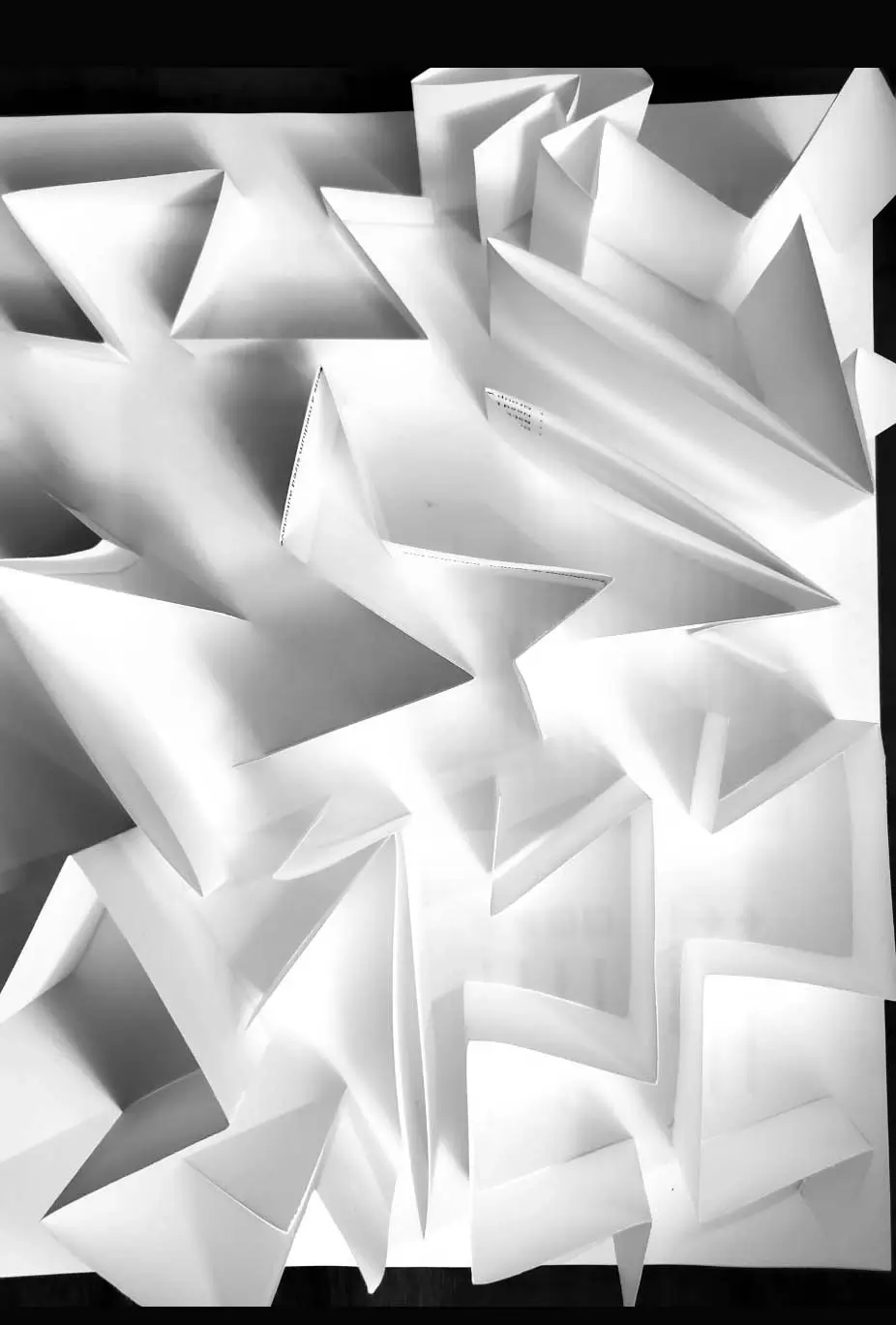
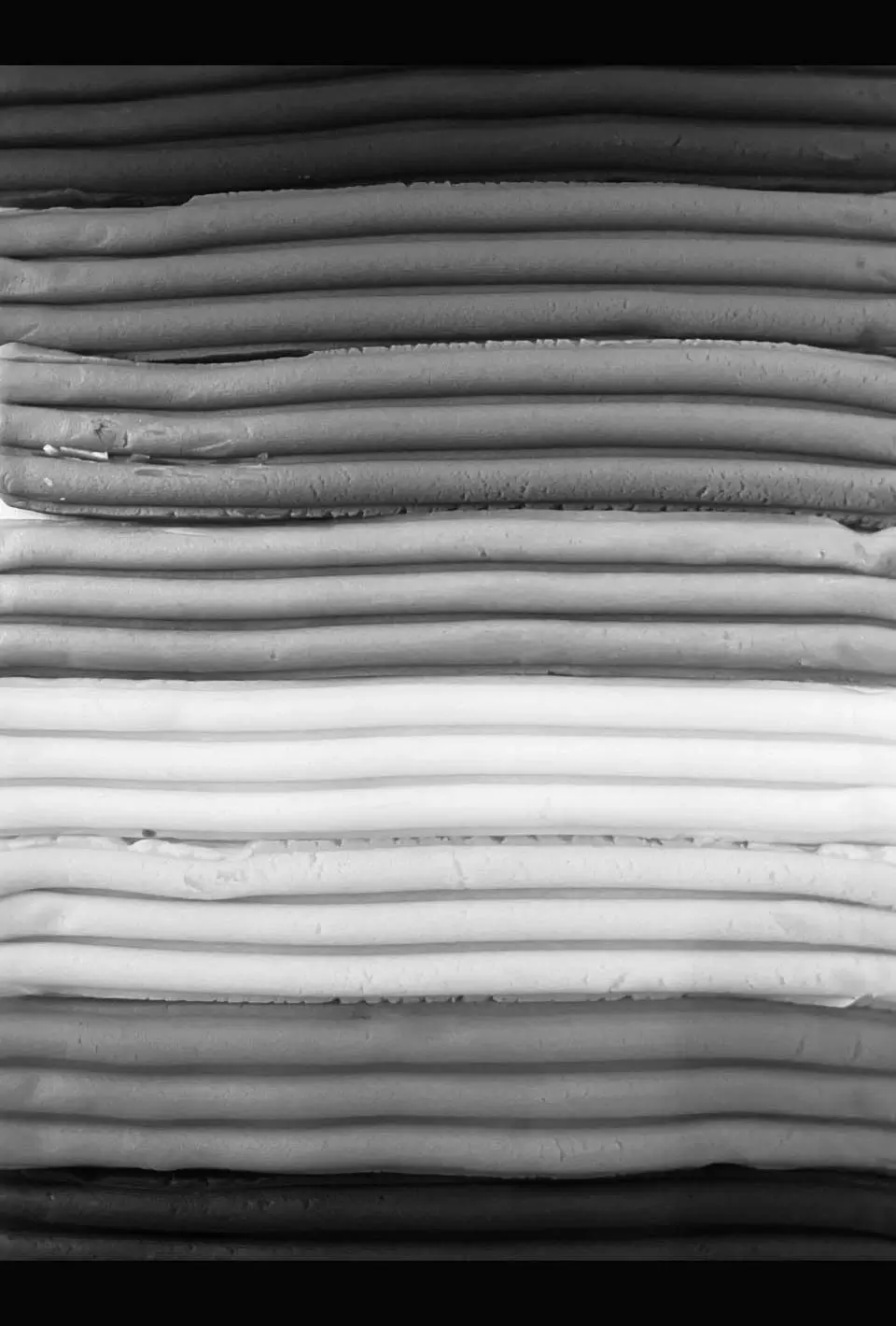
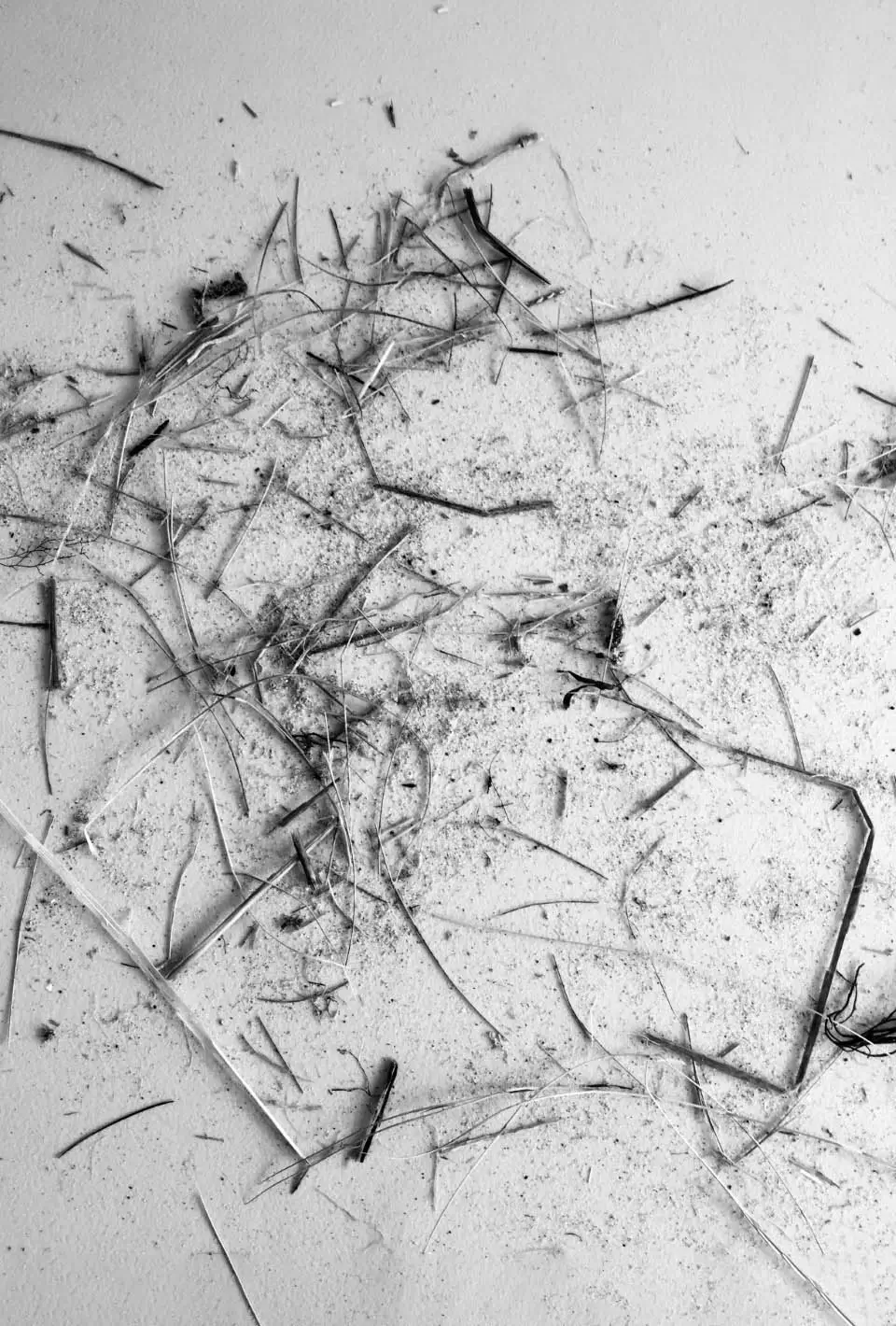

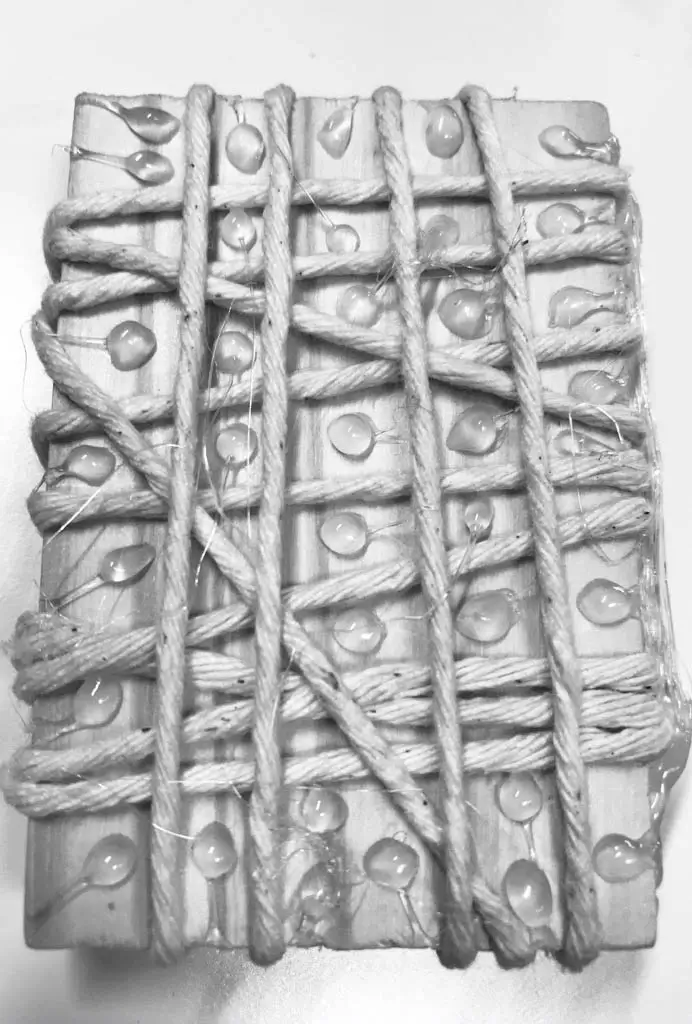
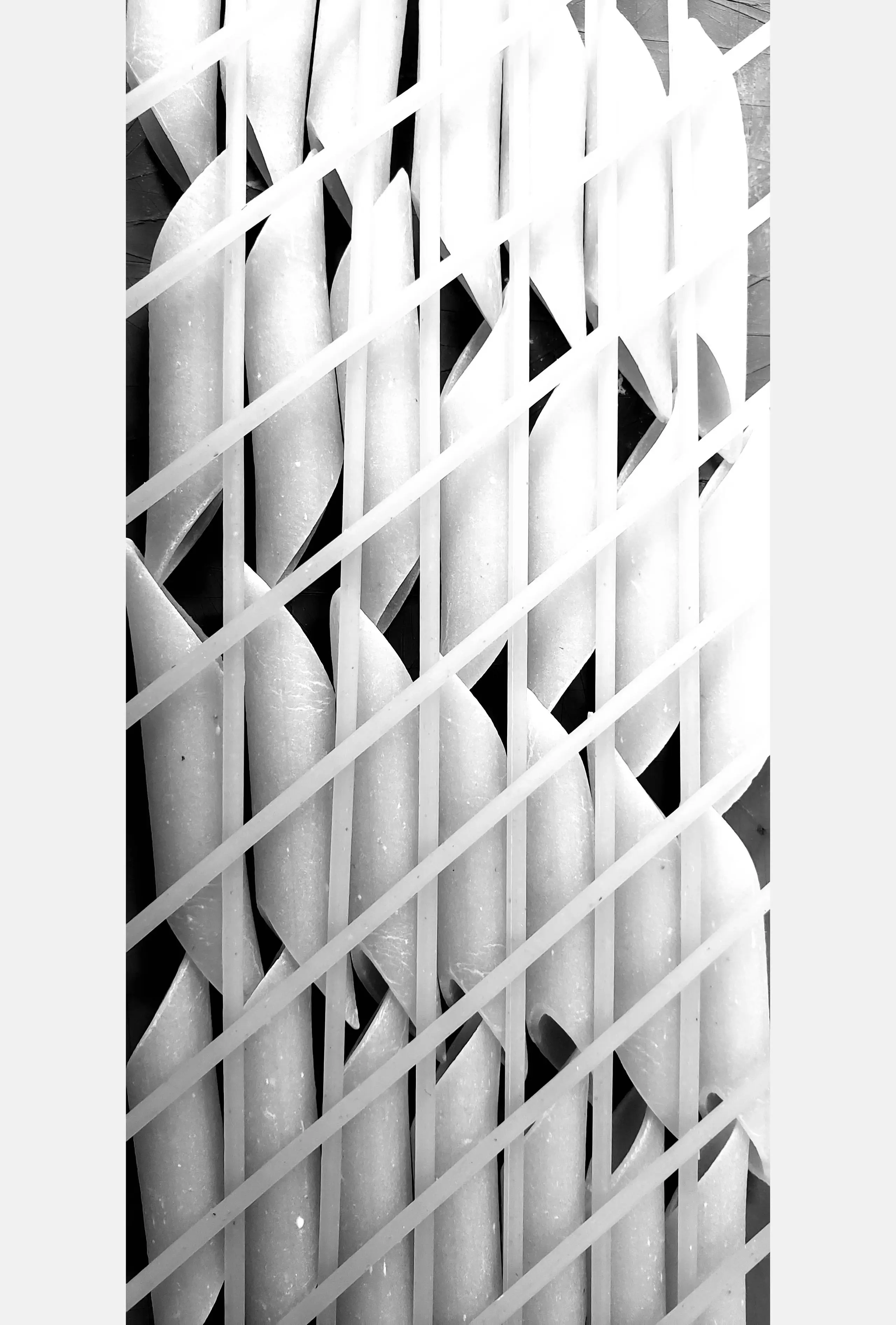
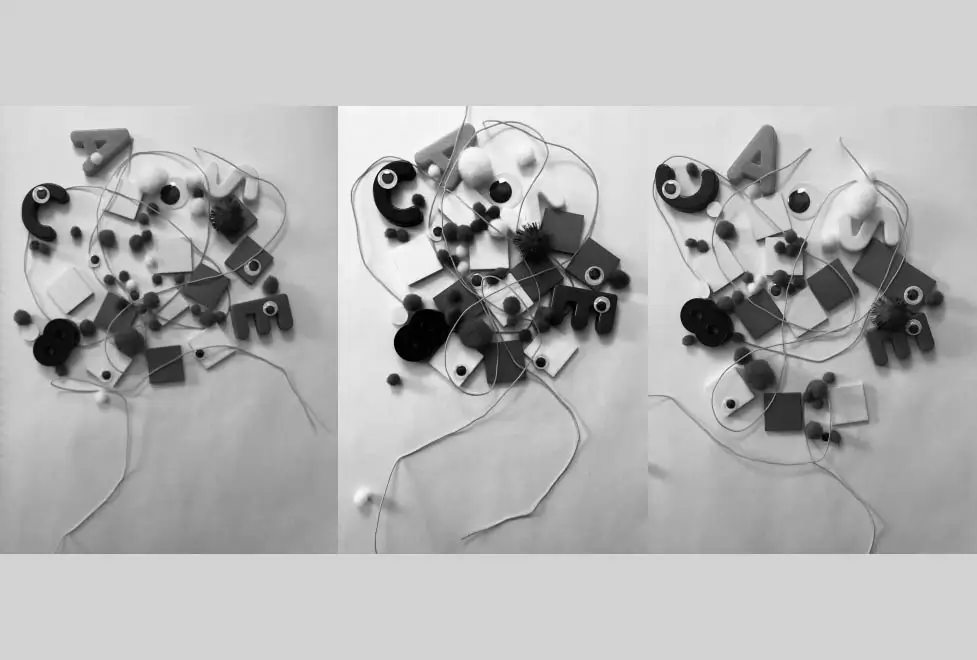


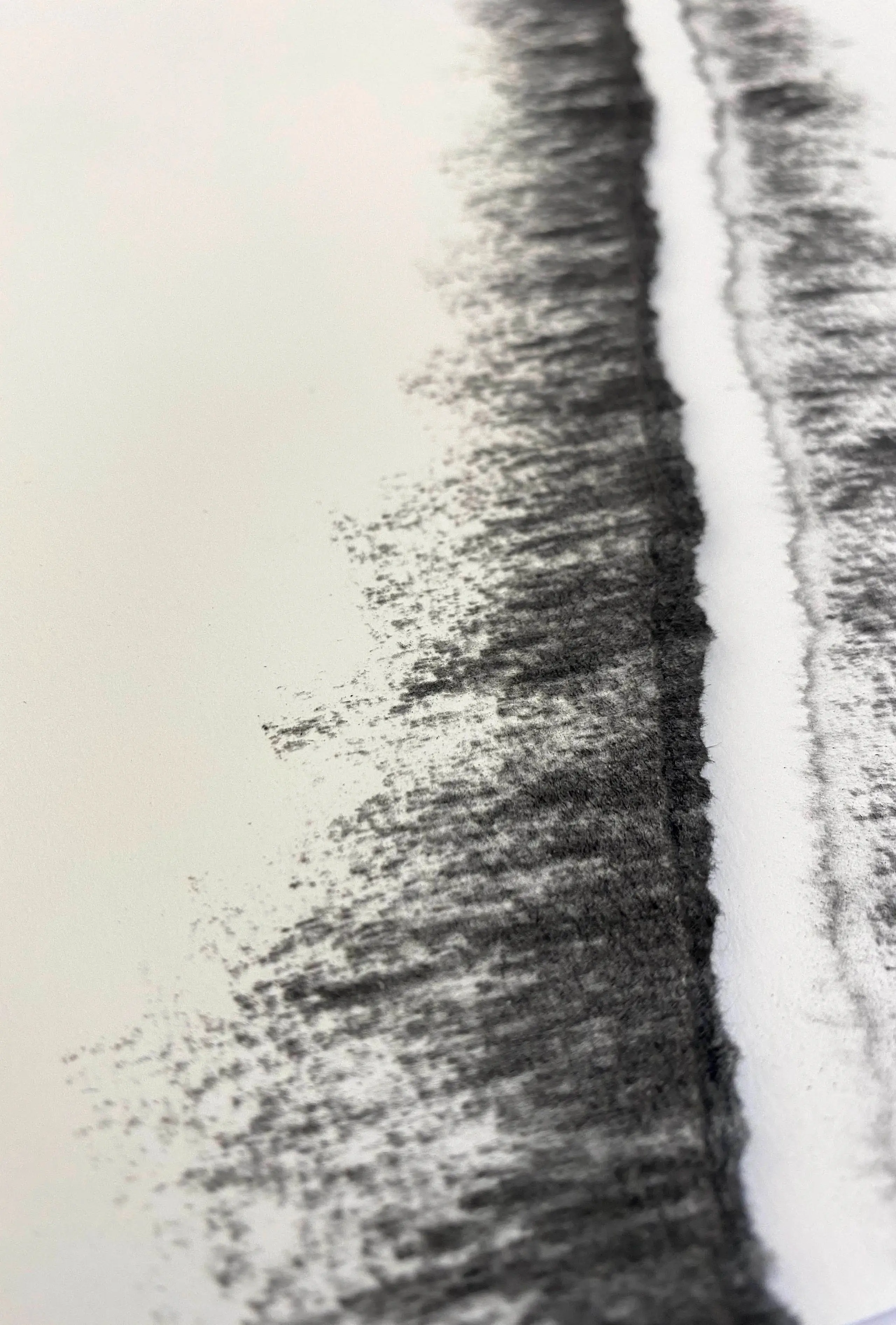
WEEK 9: PERSPECTIVE
Tools: Digital pen, colored pencil, marker on sketch paper.
Prompt: Each person created a triptych of Cinque Terre. Each person drew from multiple points of view - the elevation, plan, perspective and arranged the drawings side-by-side.

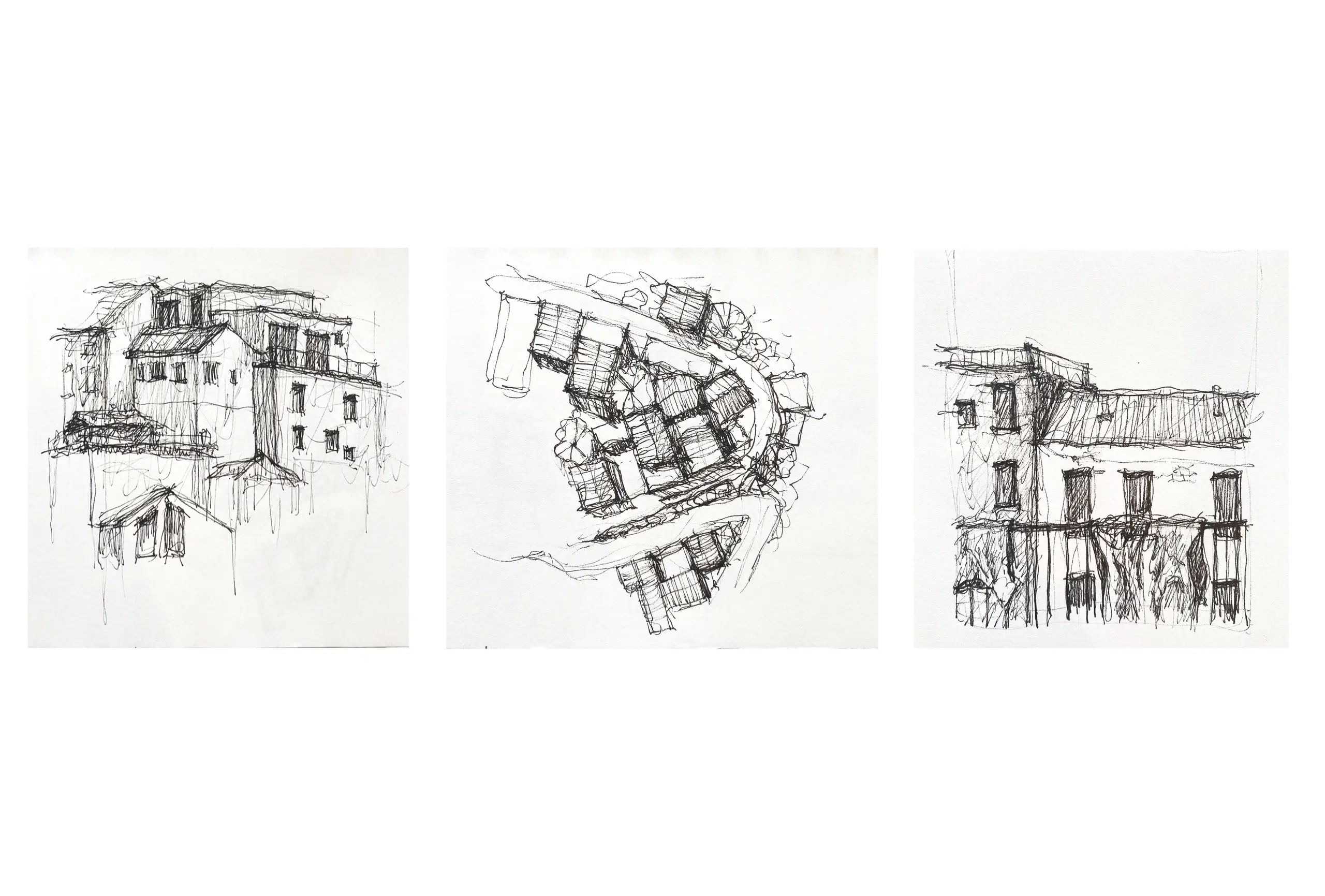


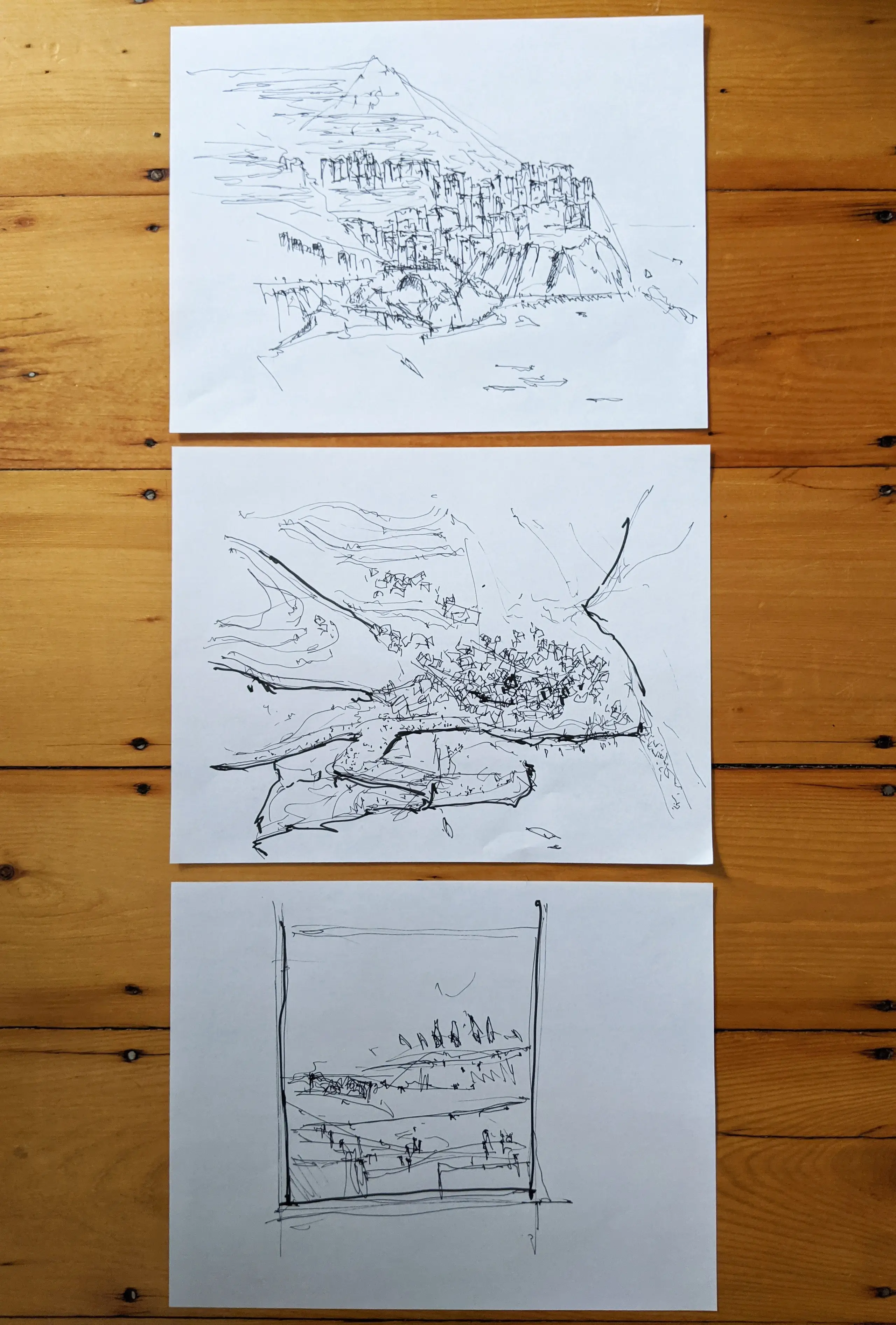
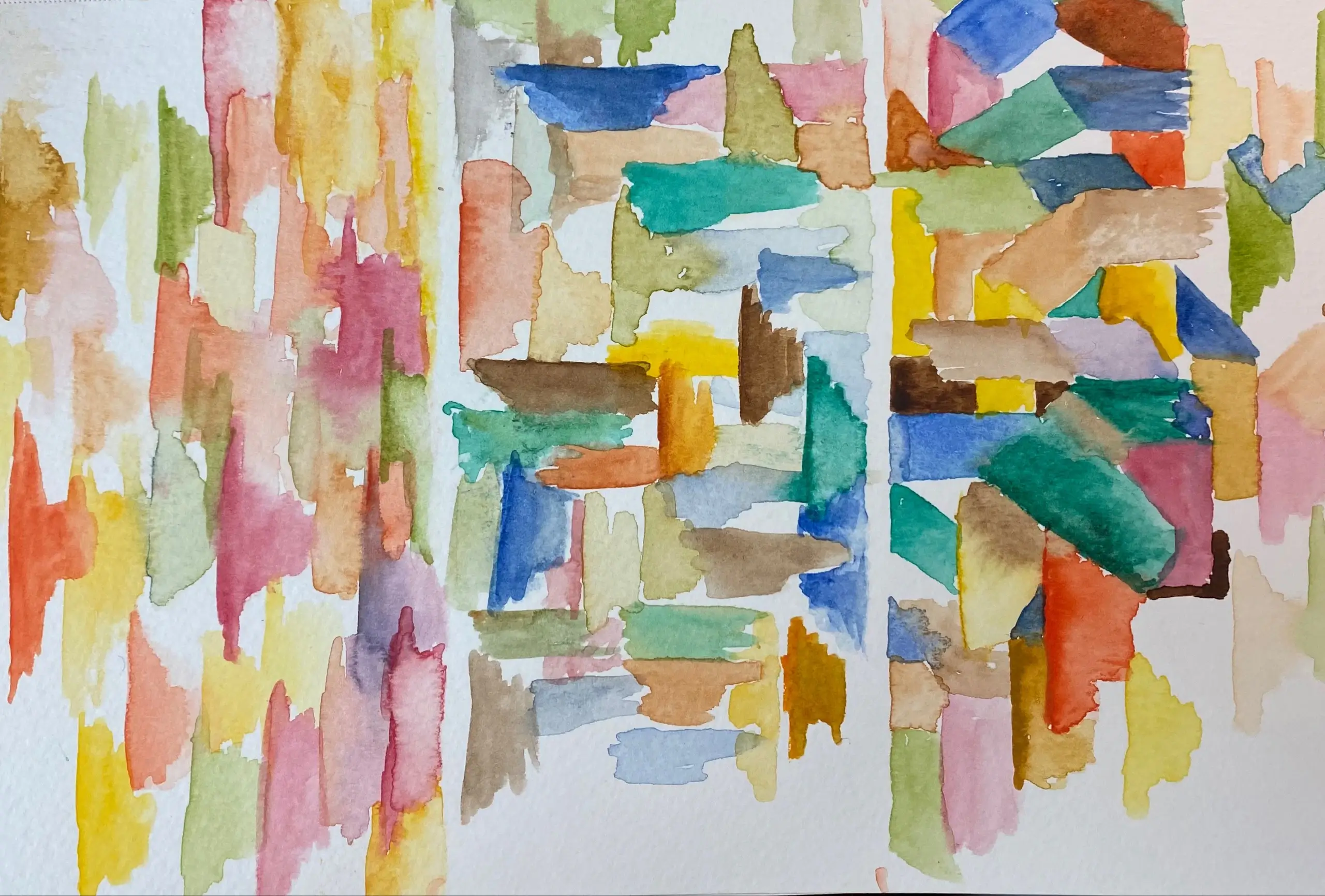
WEEK 10: PORTRAIT
Tools: Collage, digital pen, acrylic paint, pen, watercolor, photography, Etch a Sketch.
Prompt: Week 10 was spent on self-reflection through self-portraits. Many people felt uncomfortable drawing themselves. It was likely the most challenging exercise yet for this reason. Our drawings reveal to us that ARC is a unique collection of designers and thinkers, artists, and creatives.

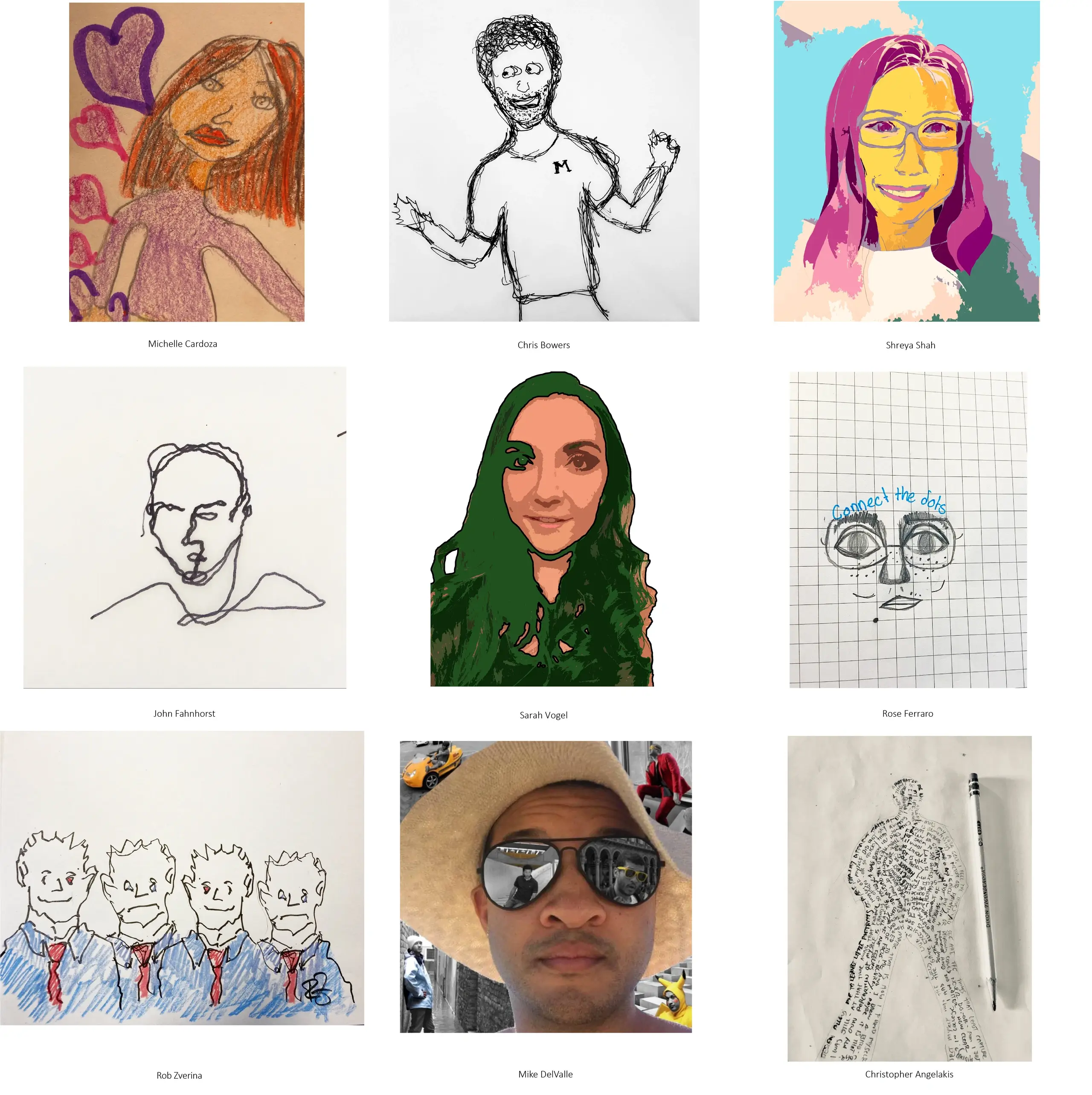
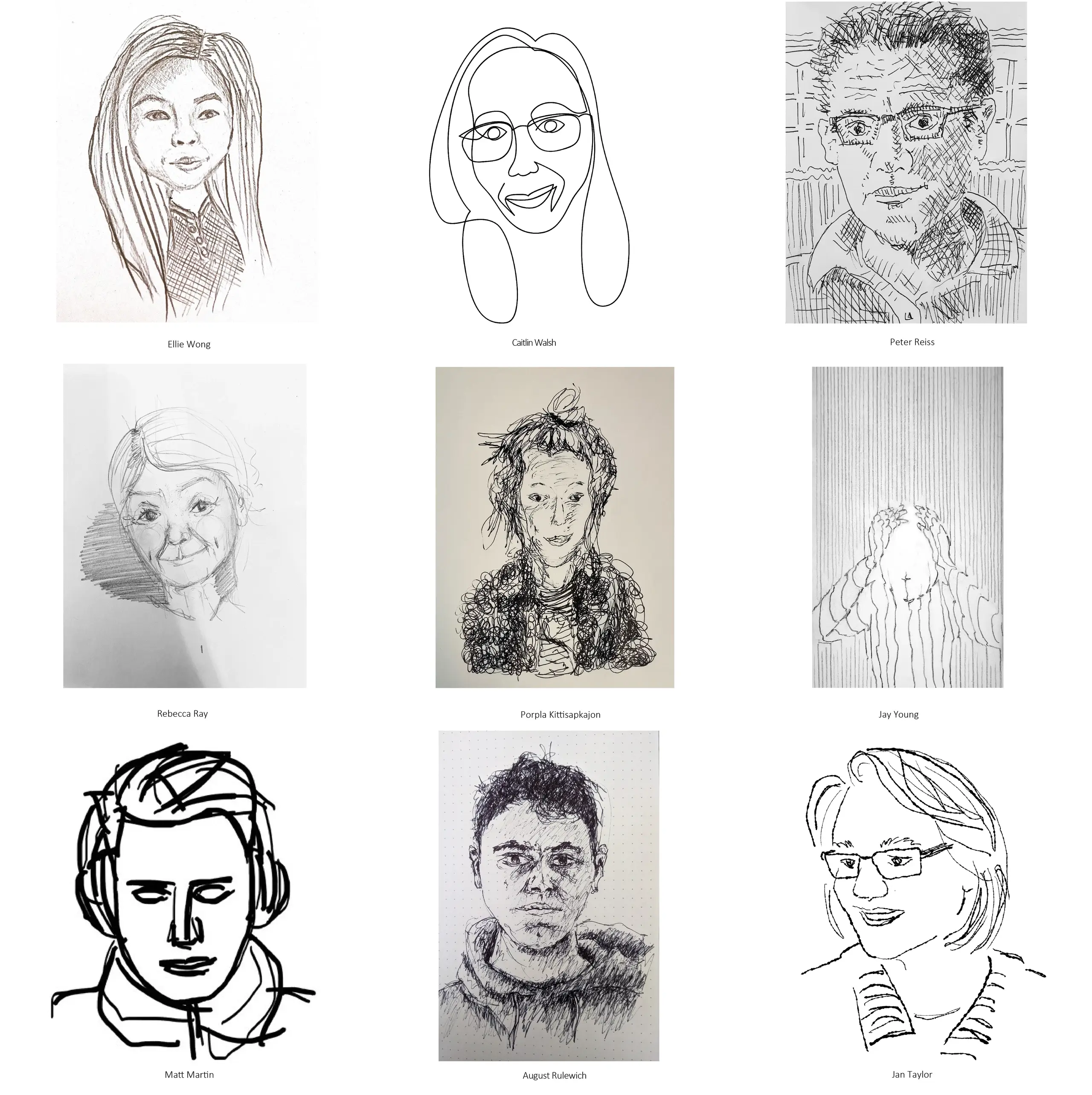

After these ten weeks, we continued drawing on more themes including places, conceptual ideas, and drawing methods - Landscape, Forgery, San Carlo, Redraw, Alhambra, Surrealism. As we continue to probe more deeply in drawing, sketching, discovering, we start to see the effects in our work and ourselves. We can free up our minds using different techniques such as collage, watercolors, mixing hand drawing with digital methods.
Many projects are starting to dip into these techniques more and more. There is more exchange of ideas and styles and less fear. Still, the most telling result of progress is the increase in engagement and contribution from different people and points of view within our staff.